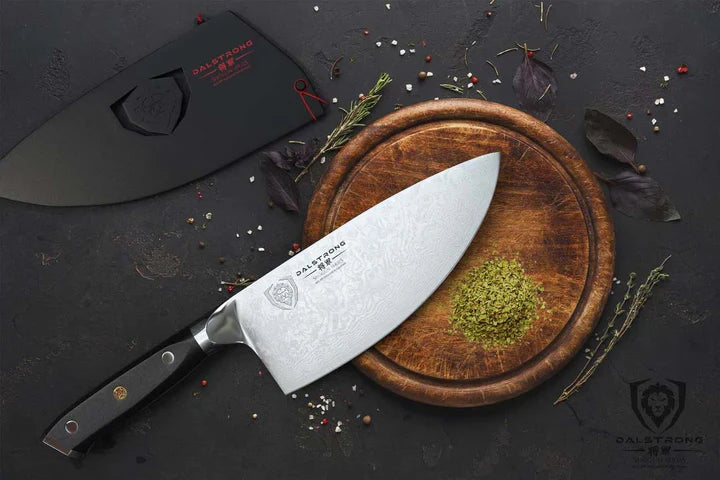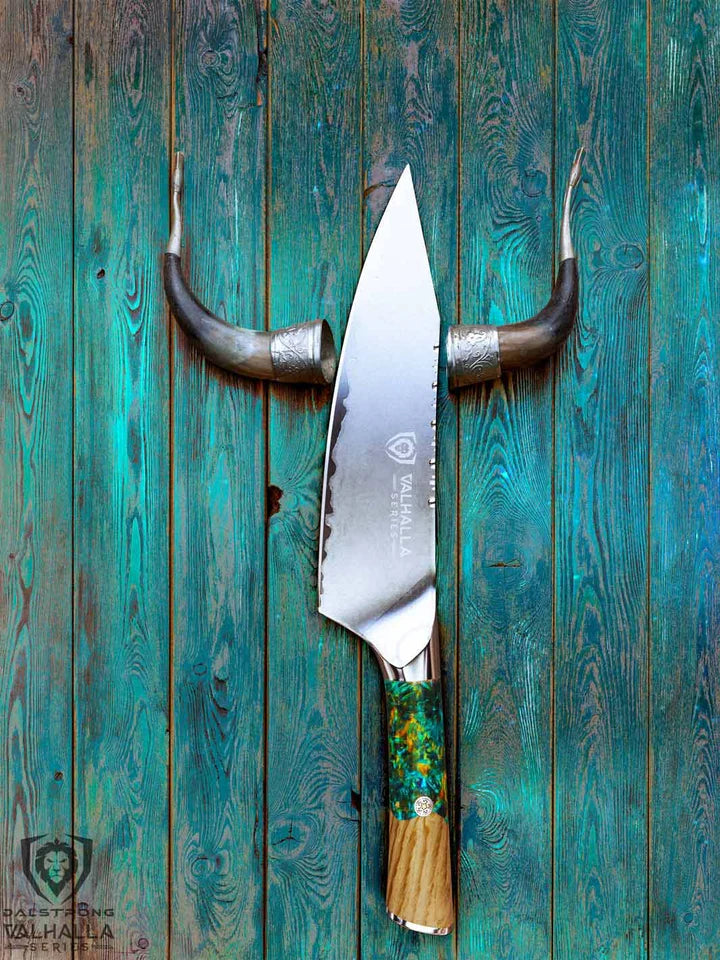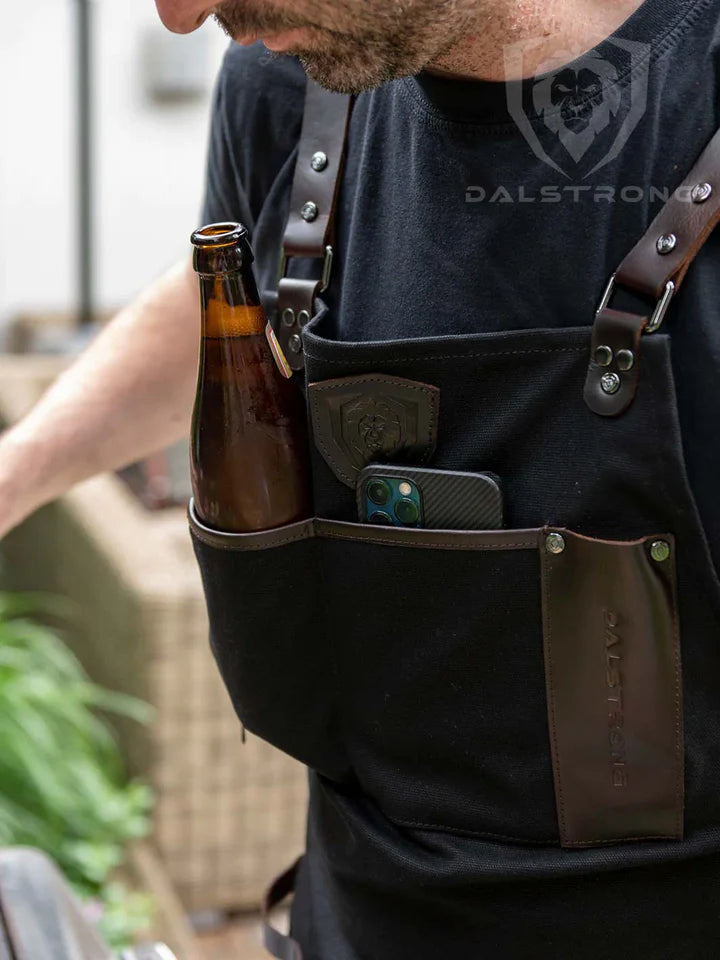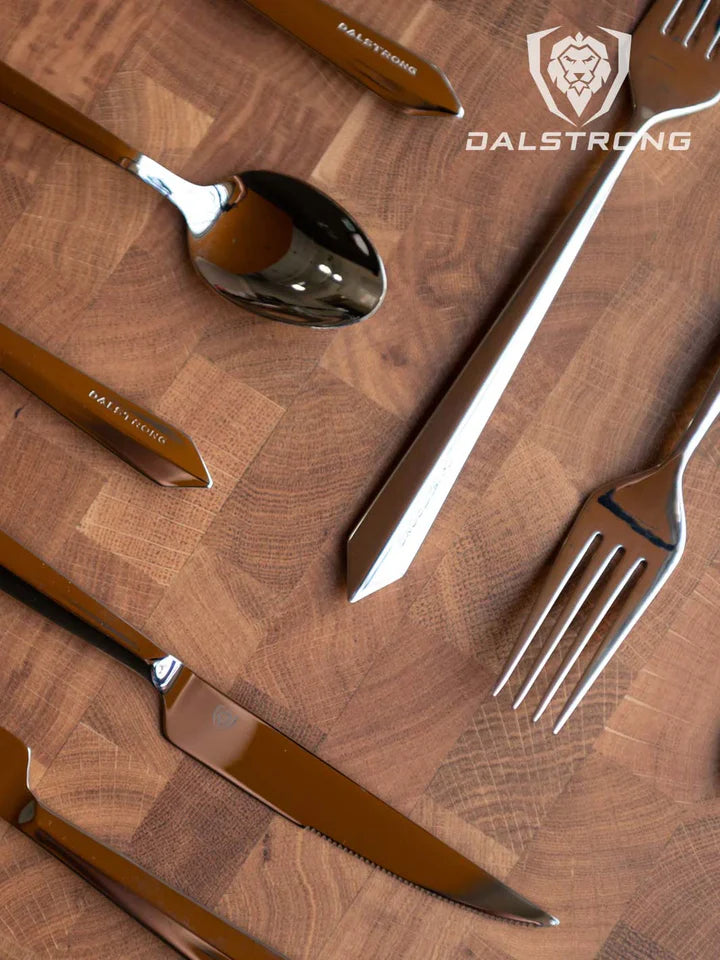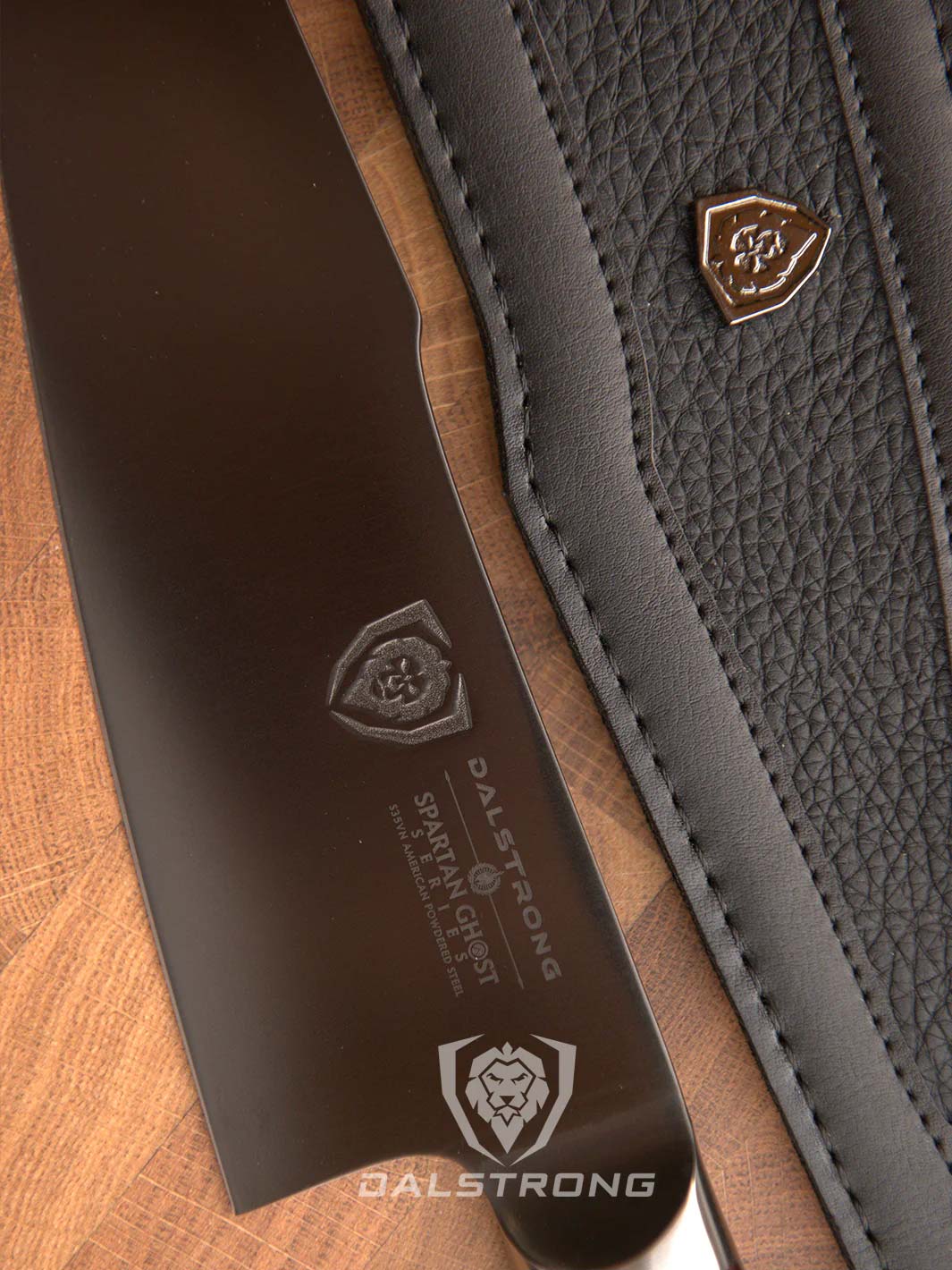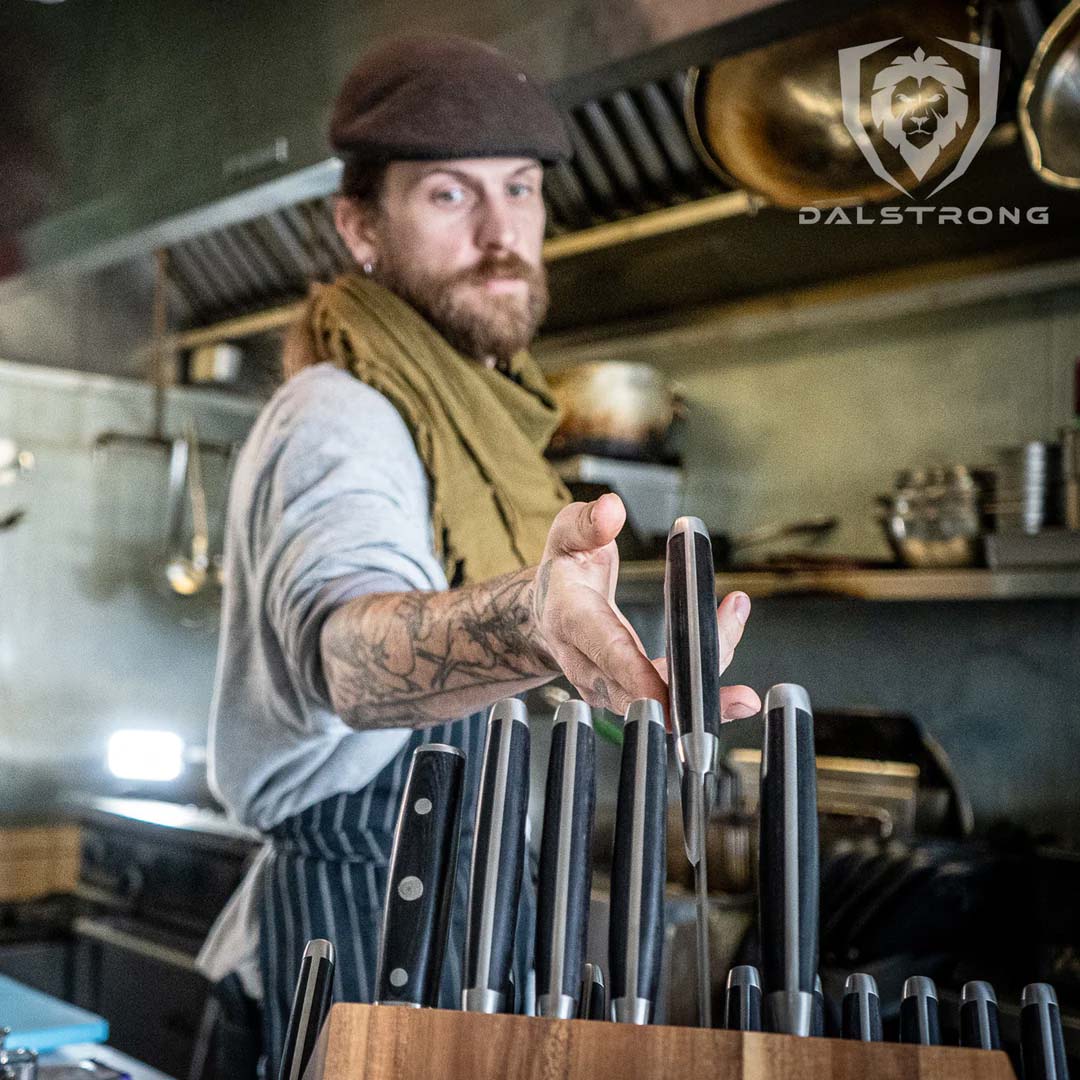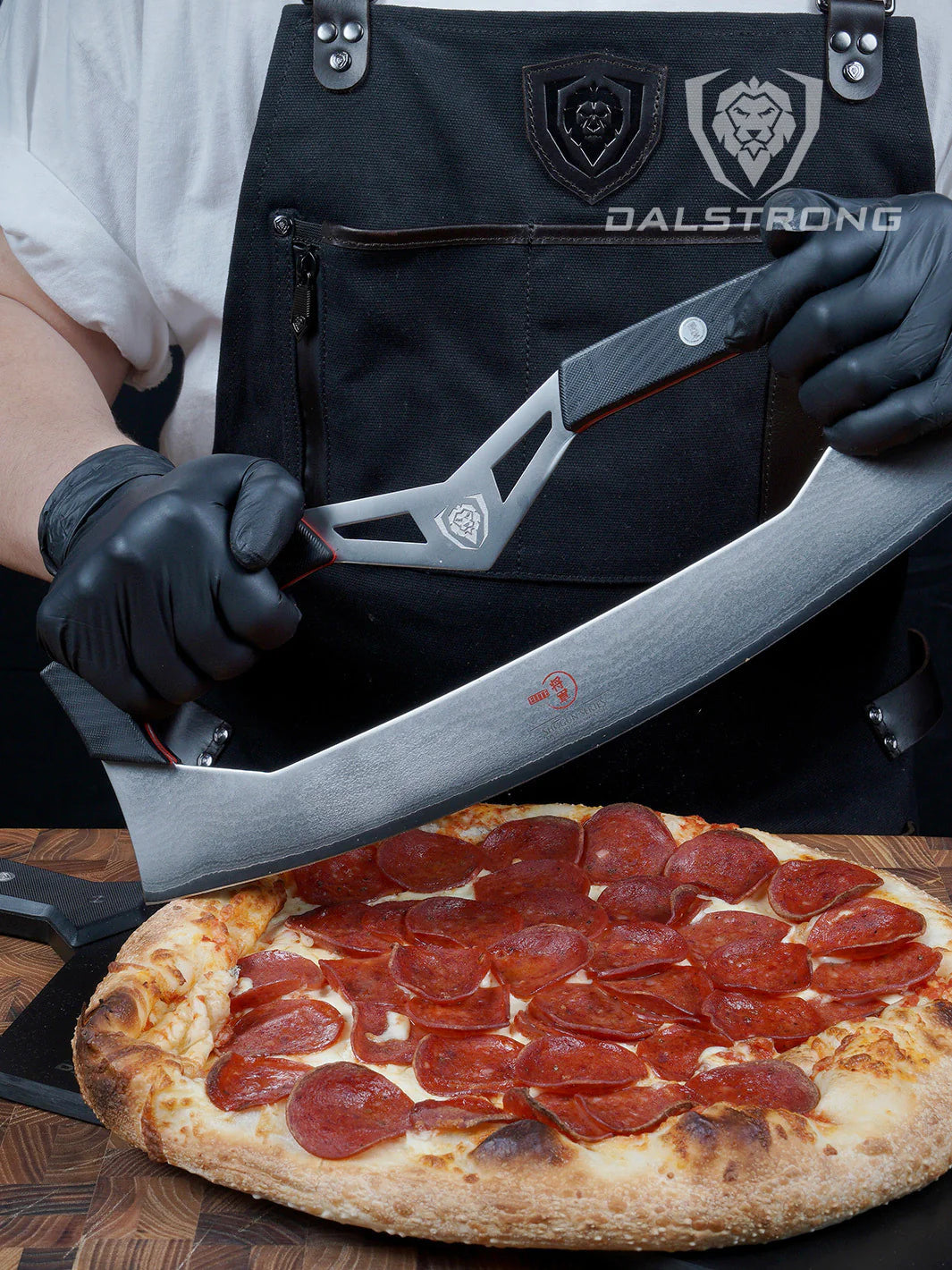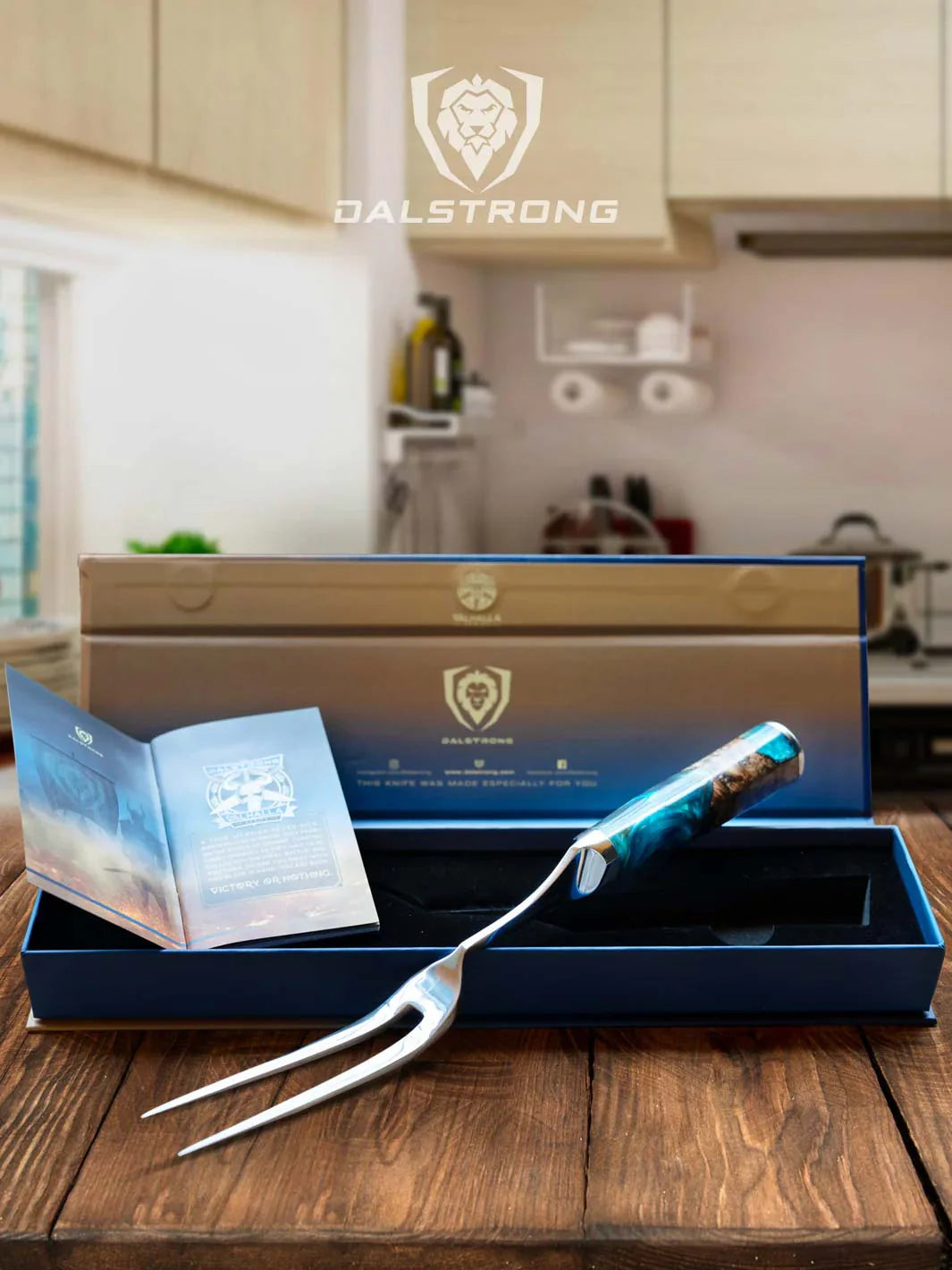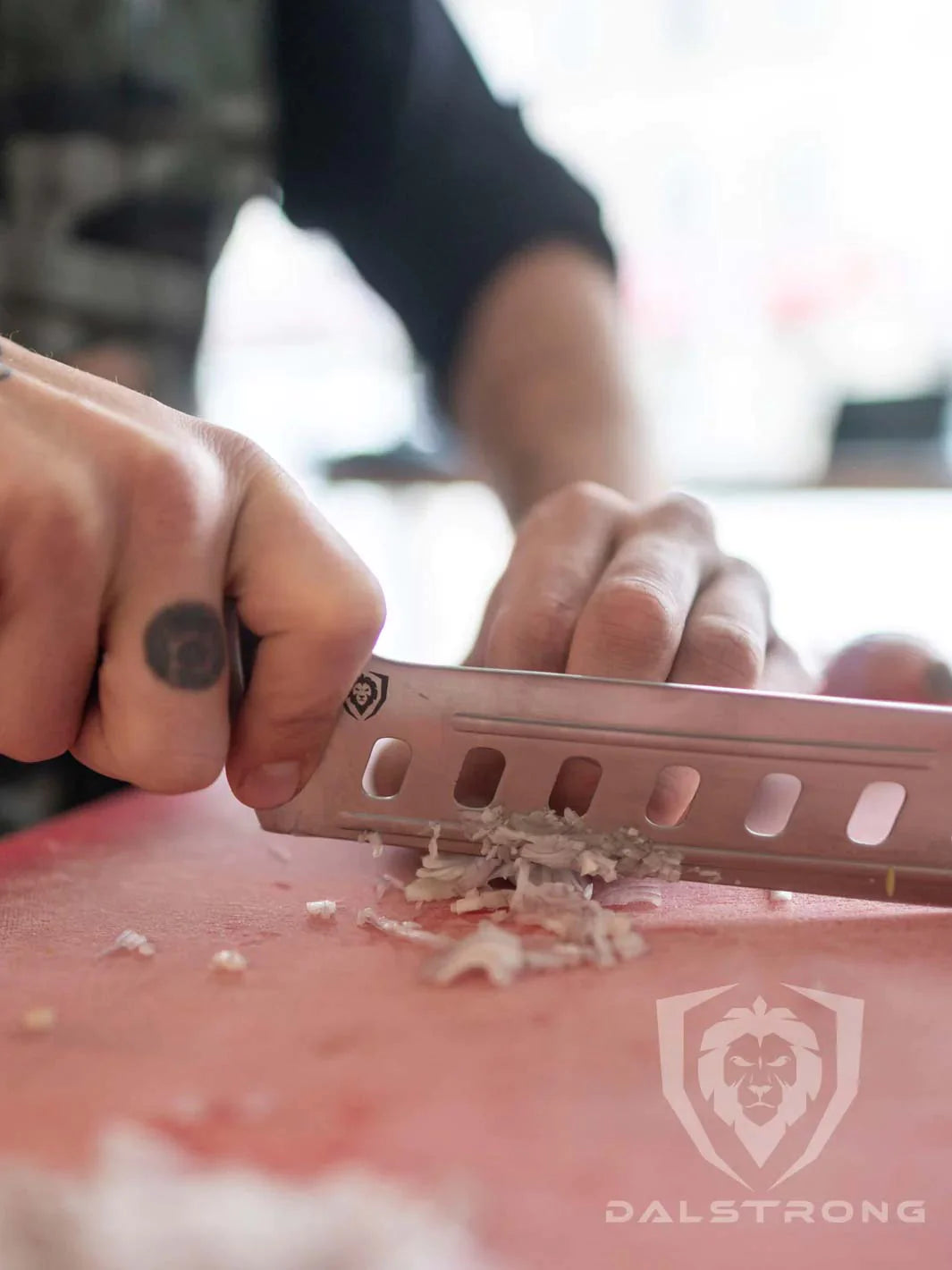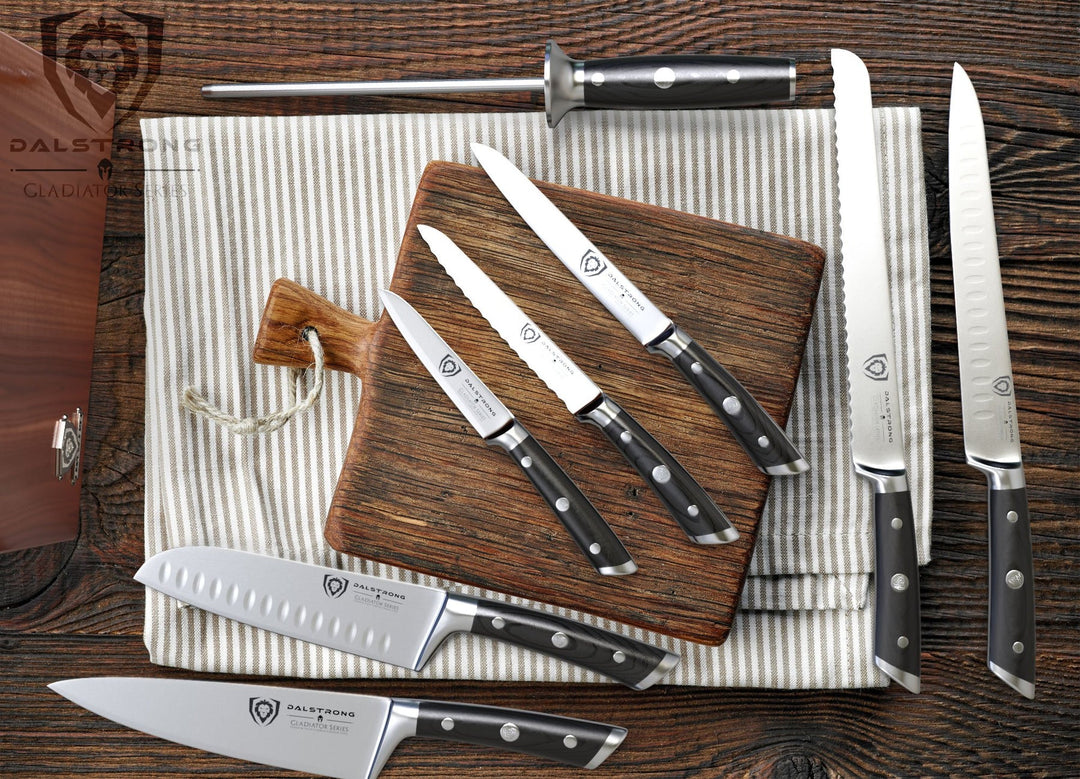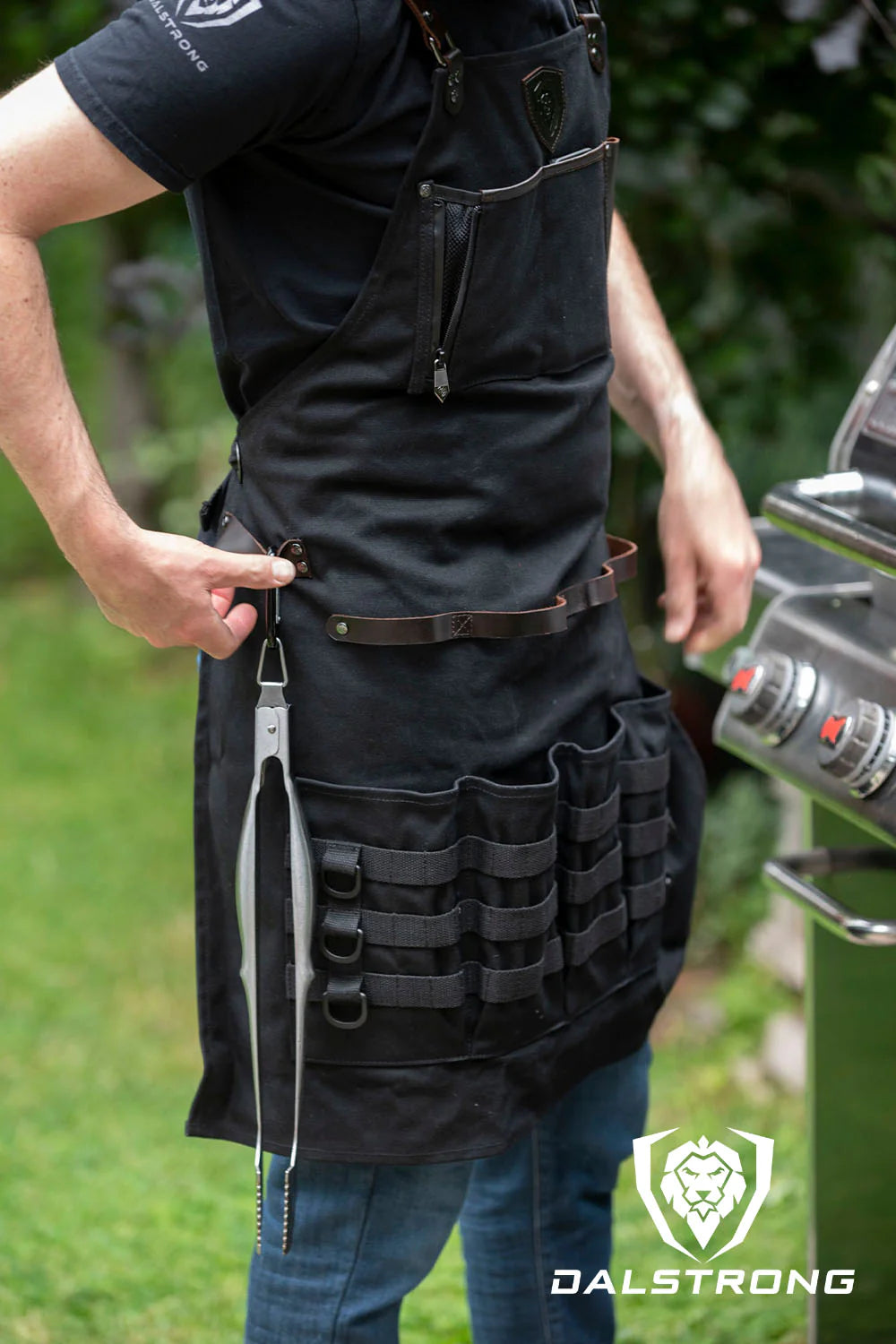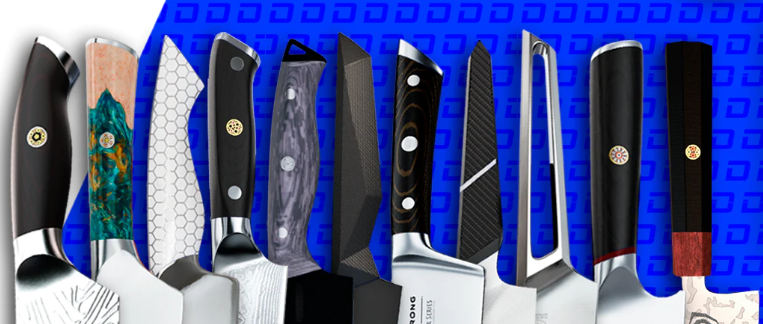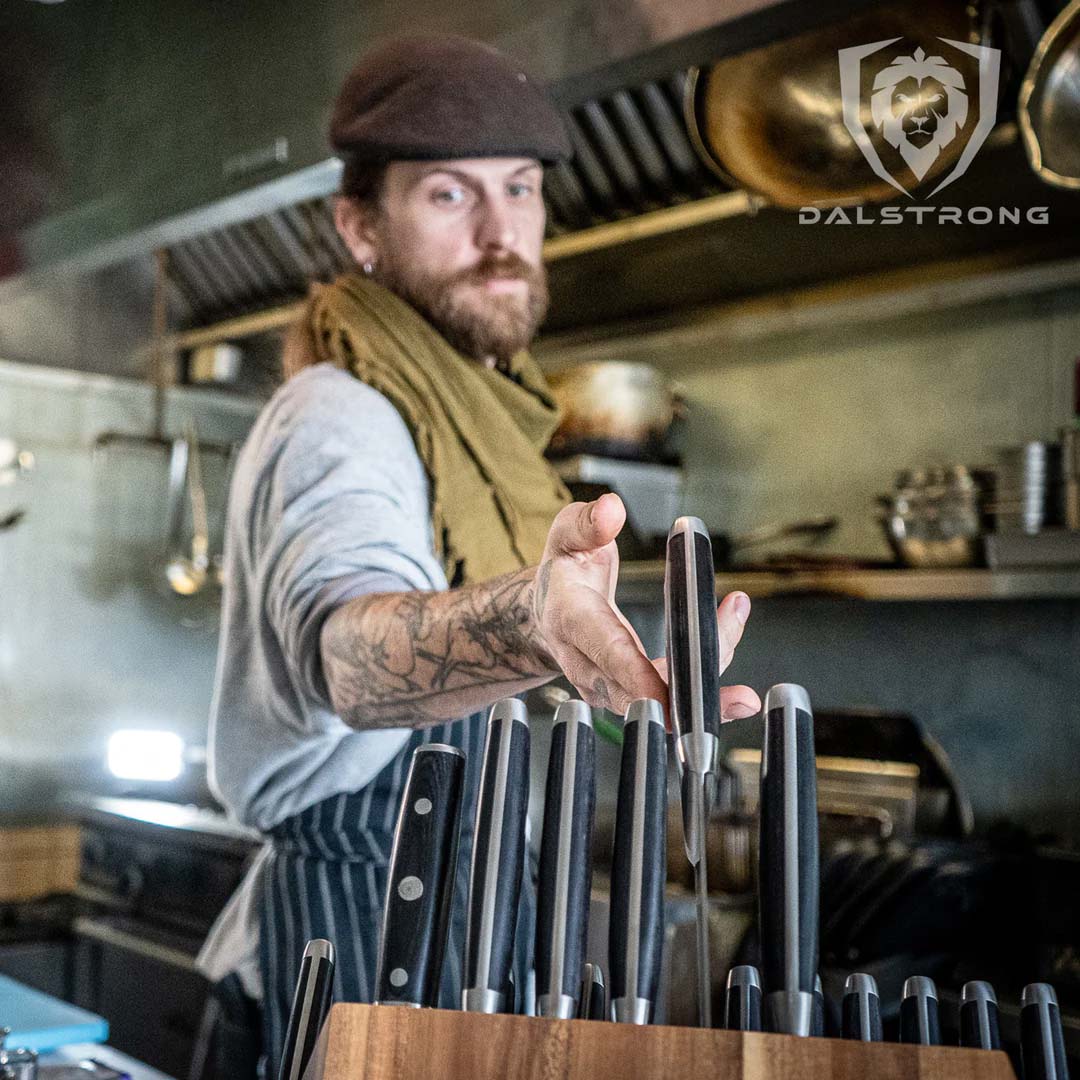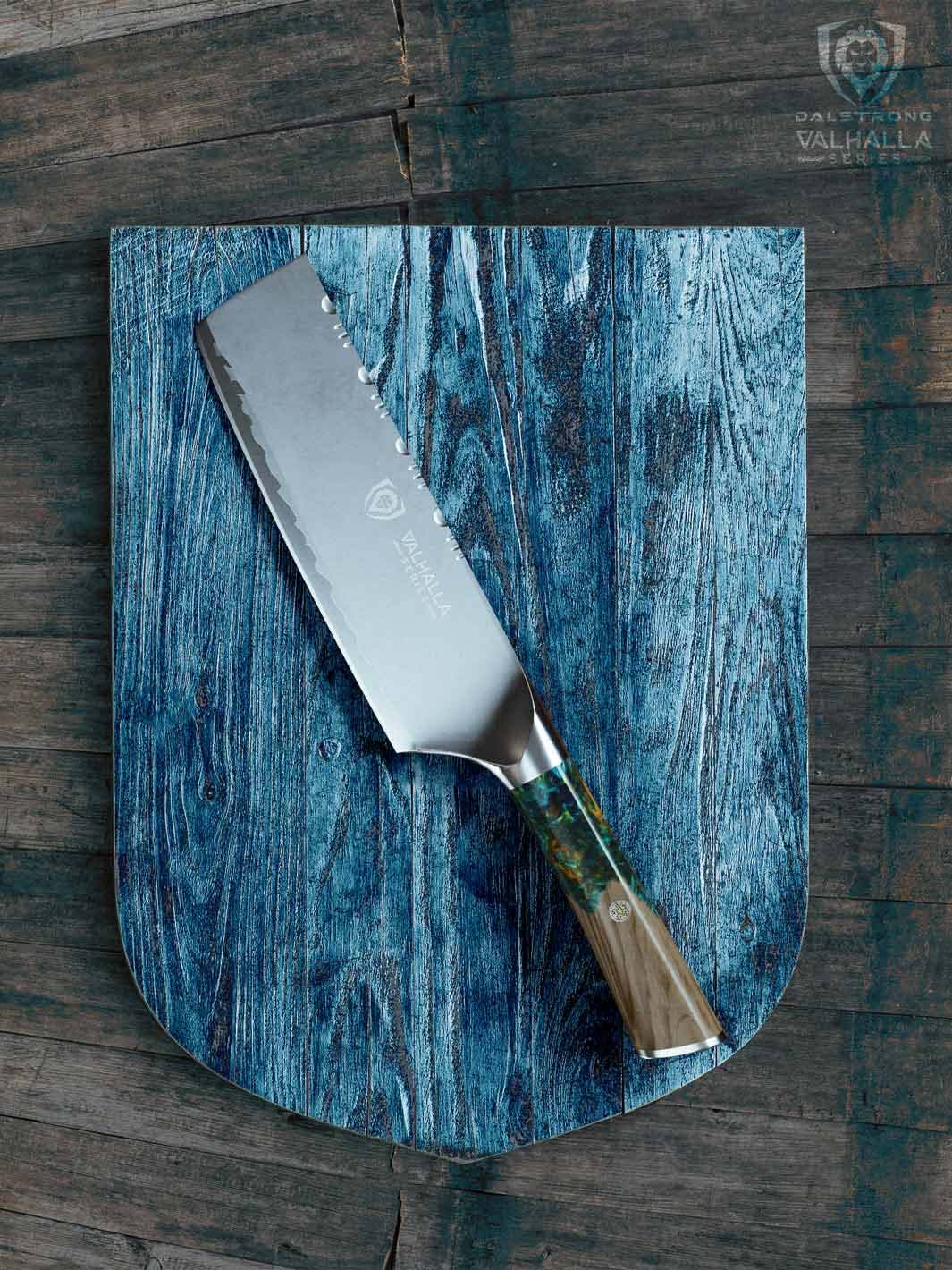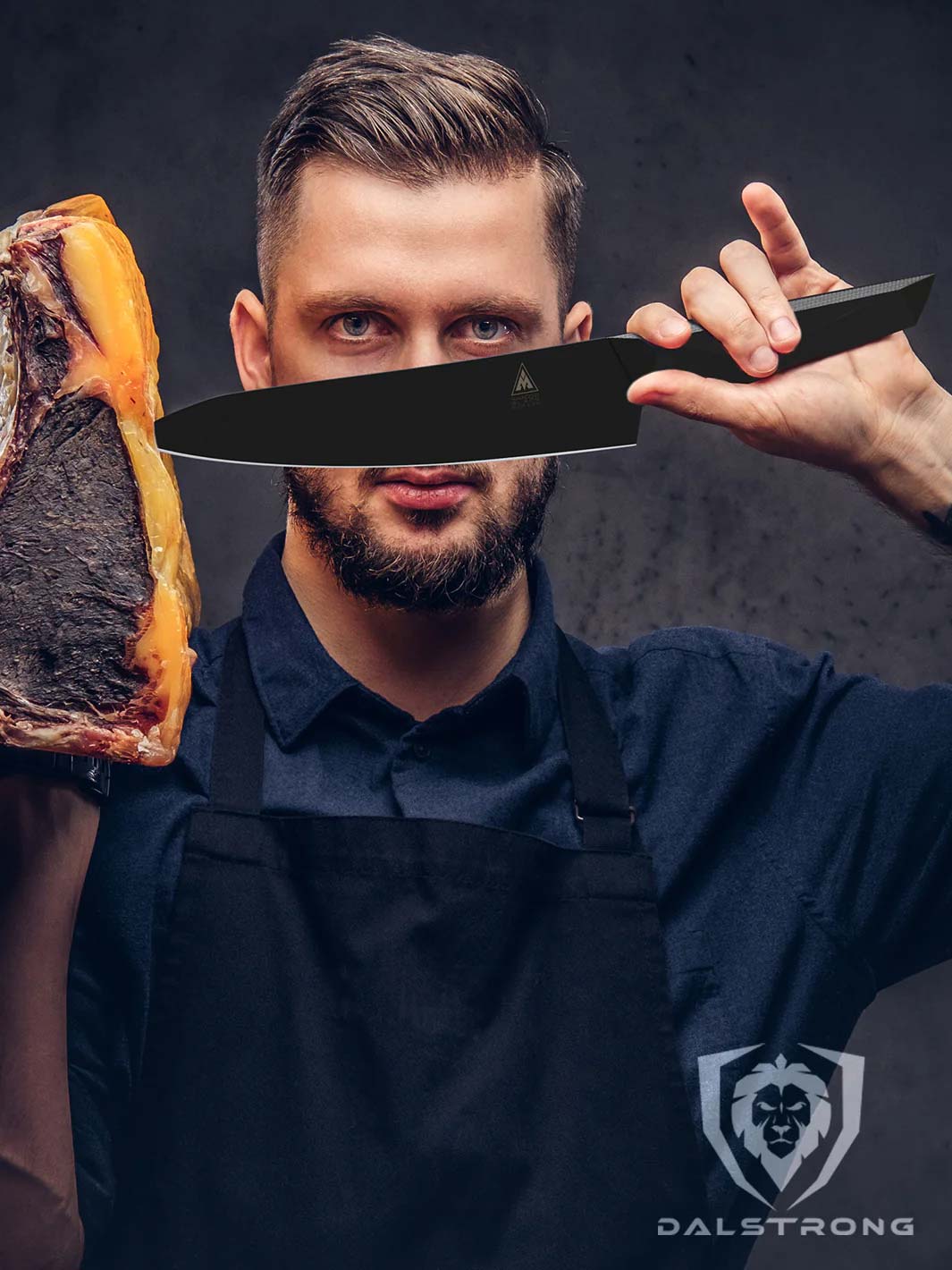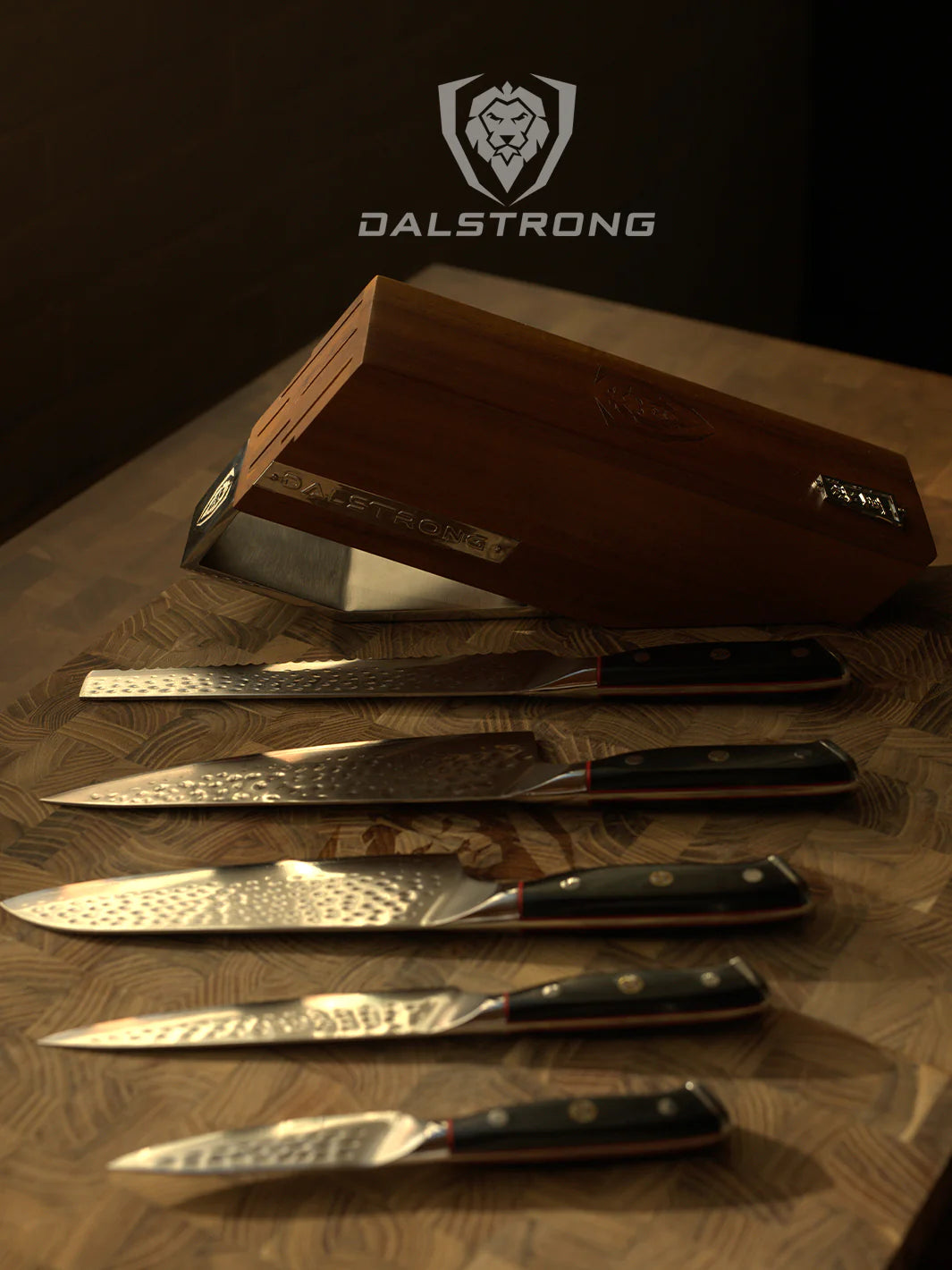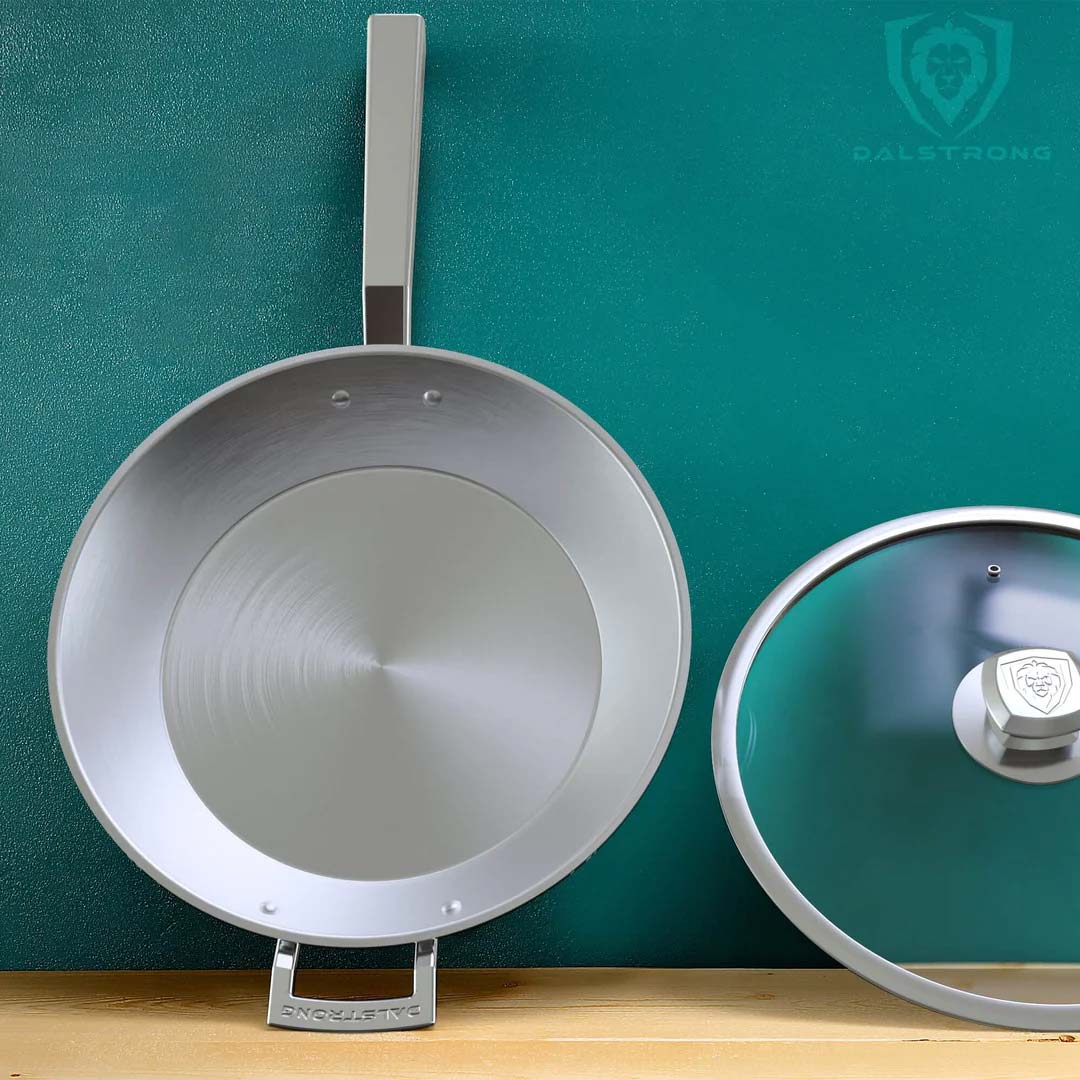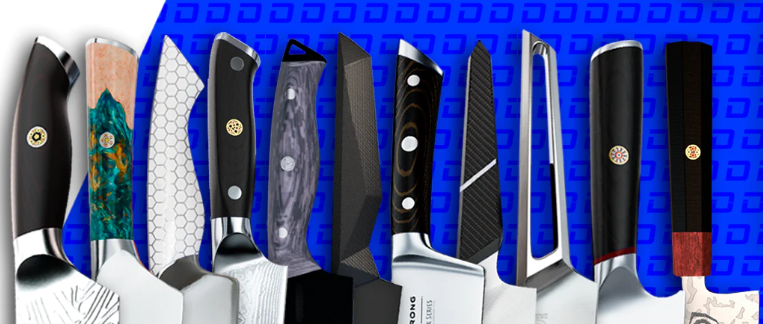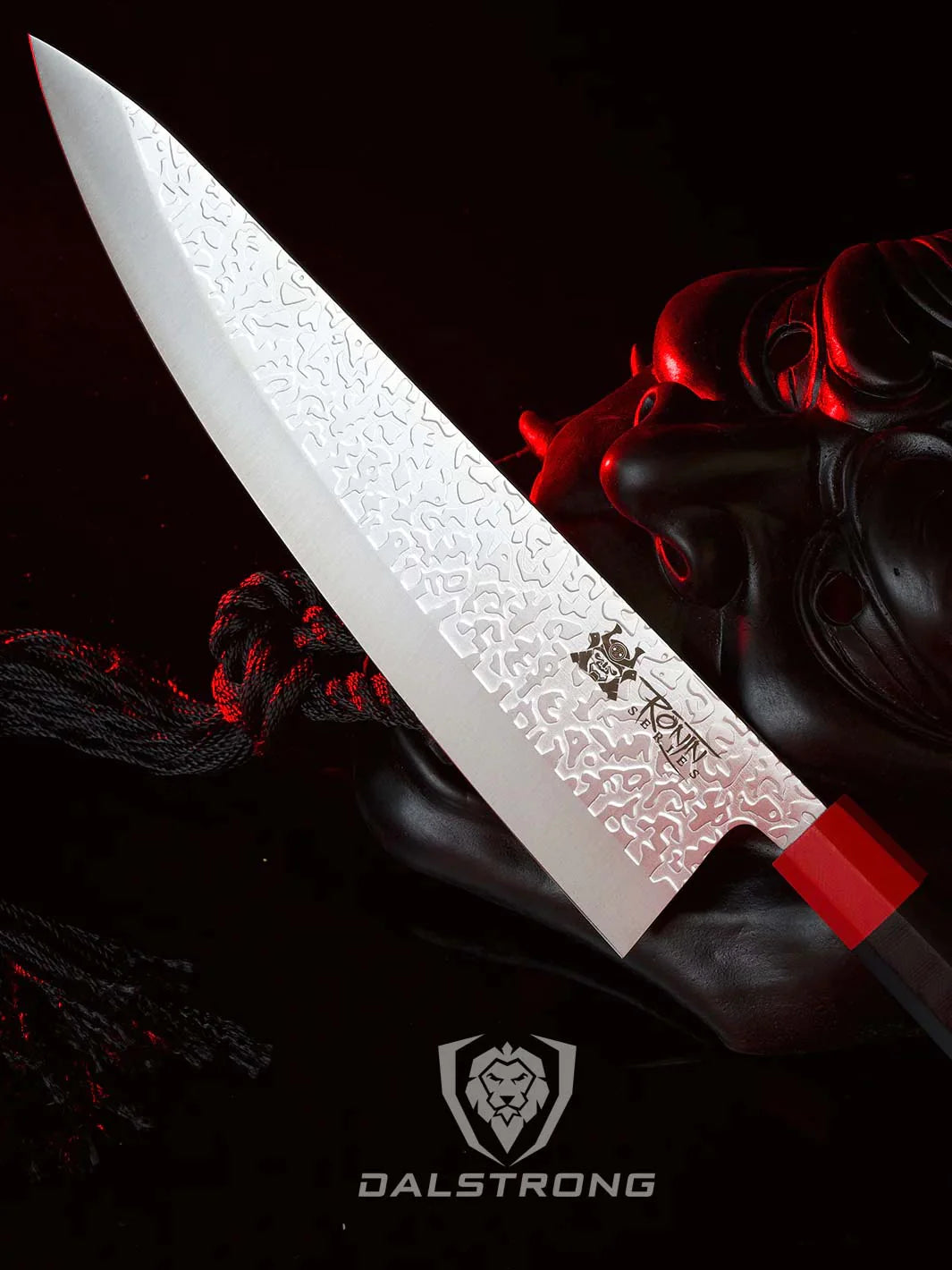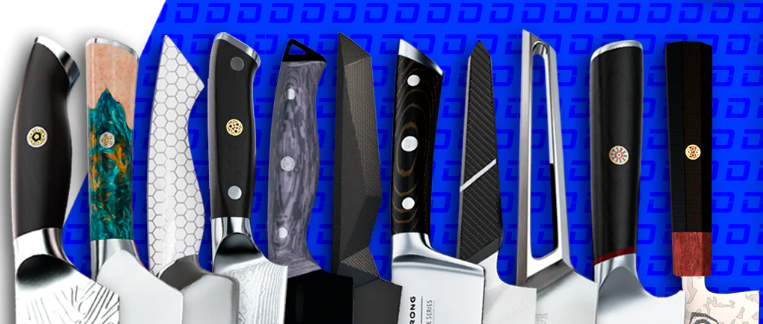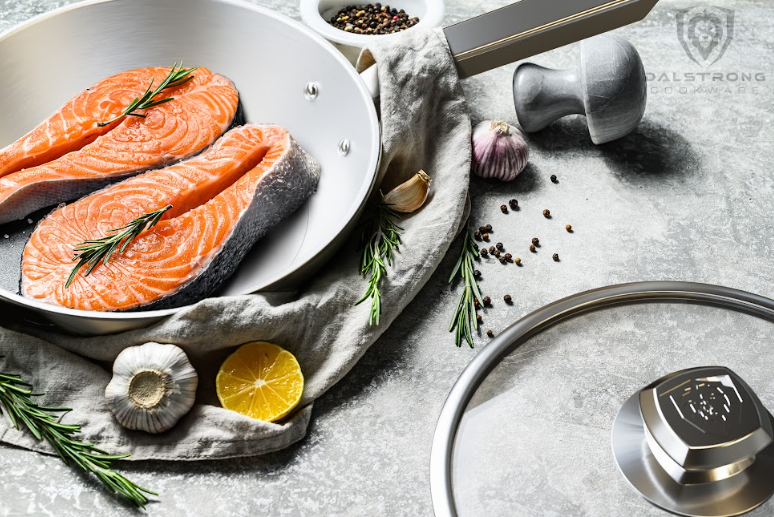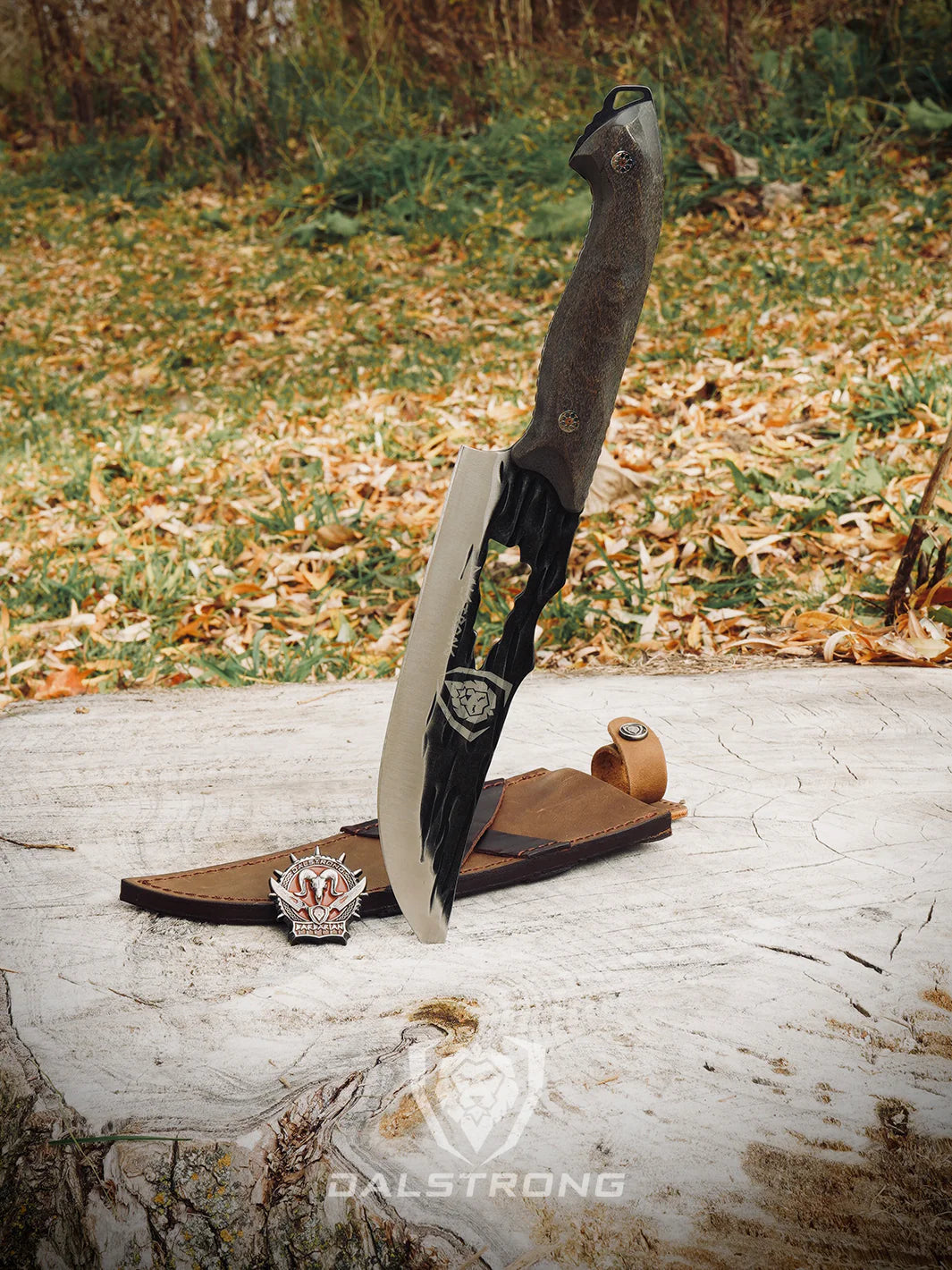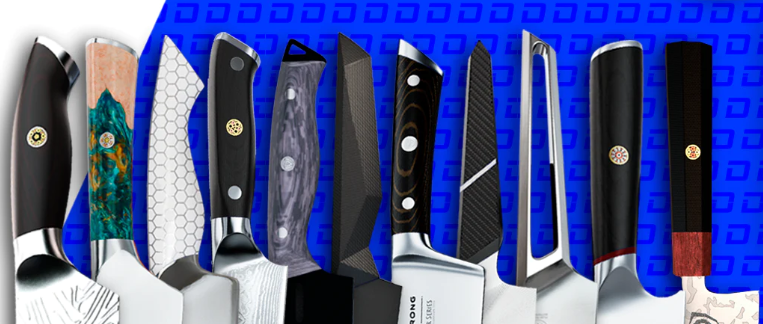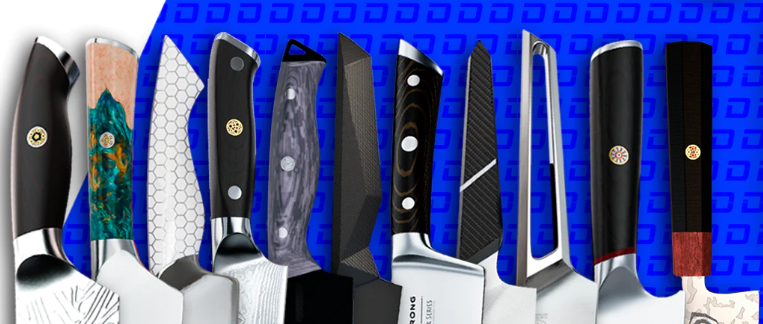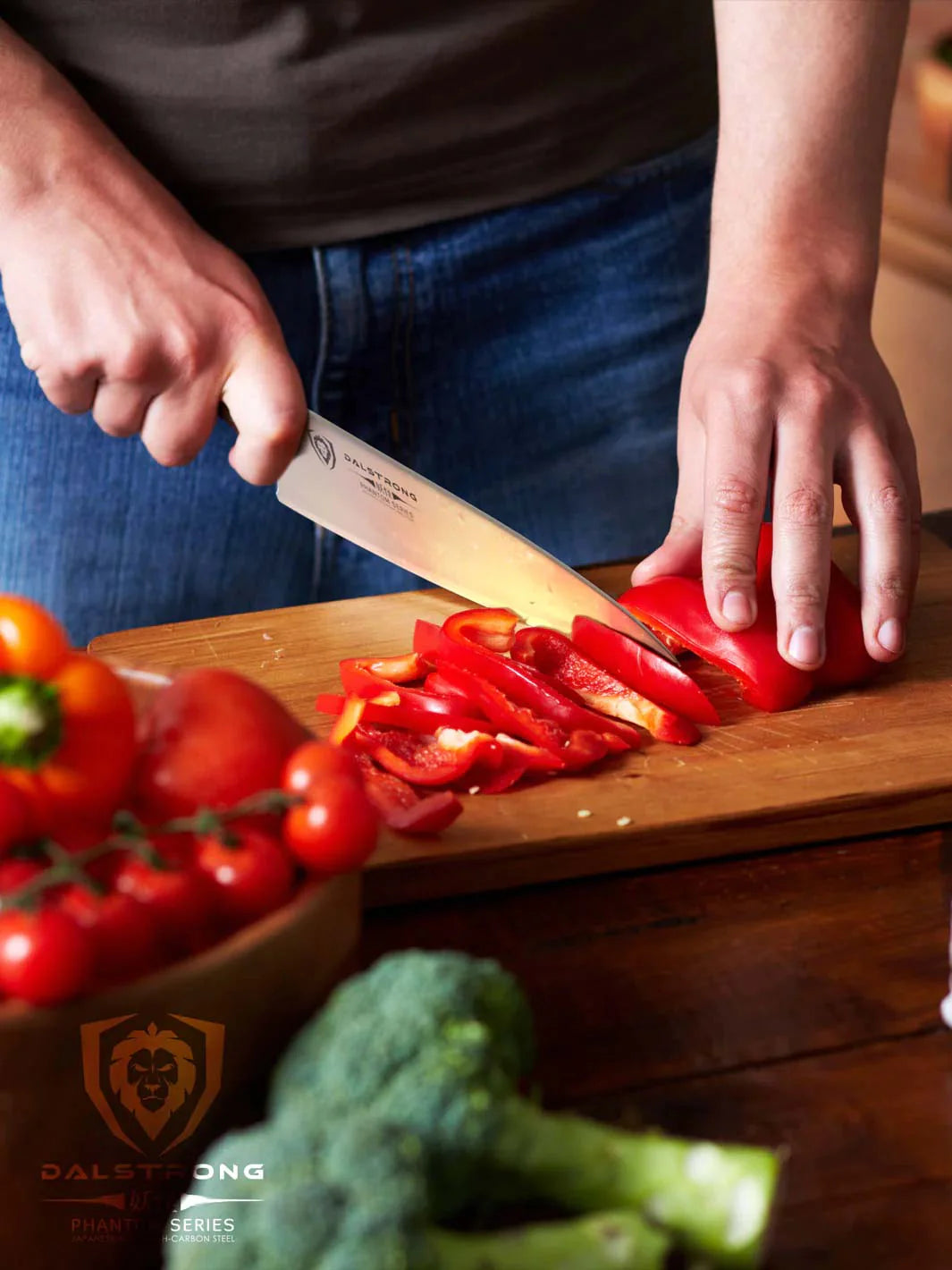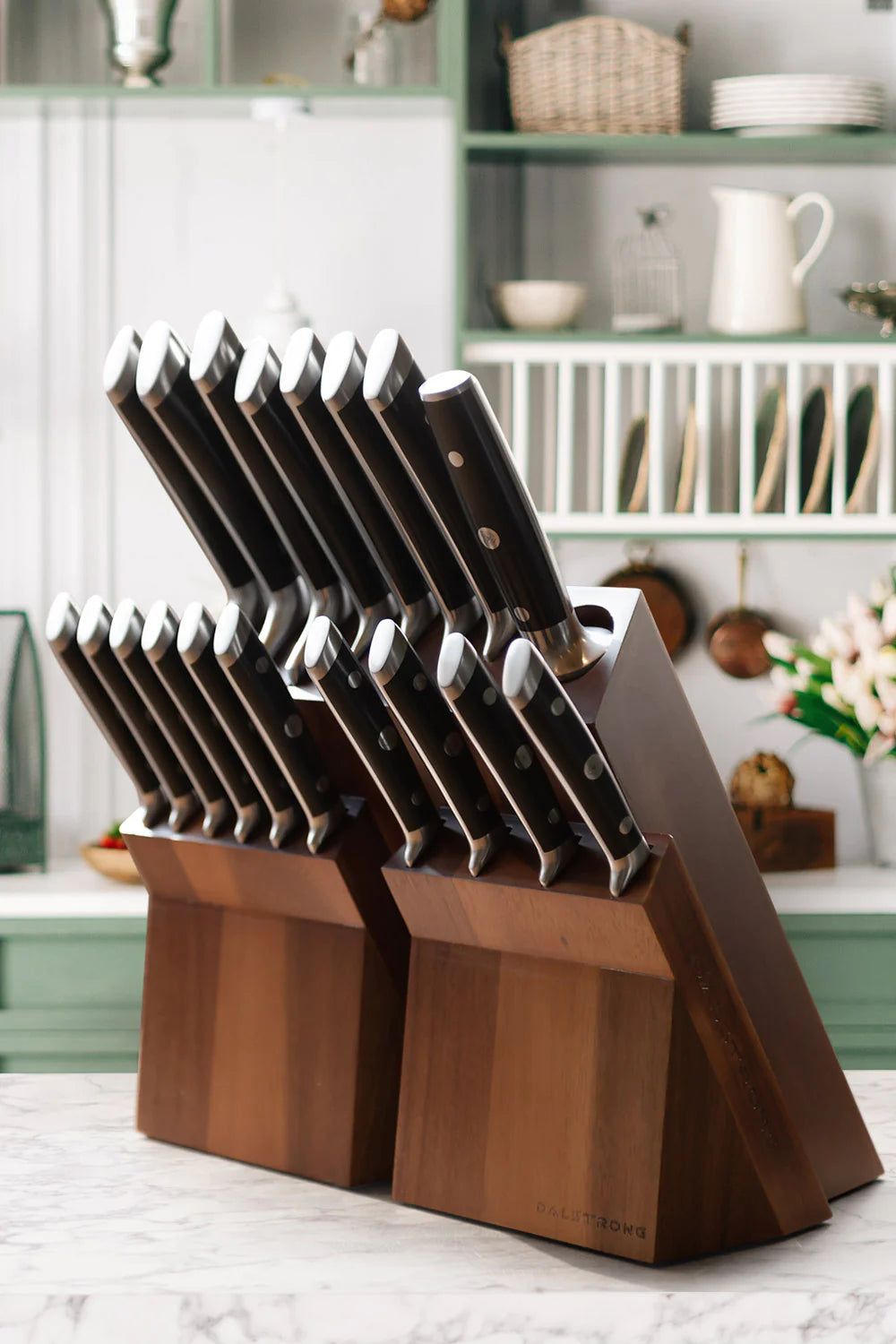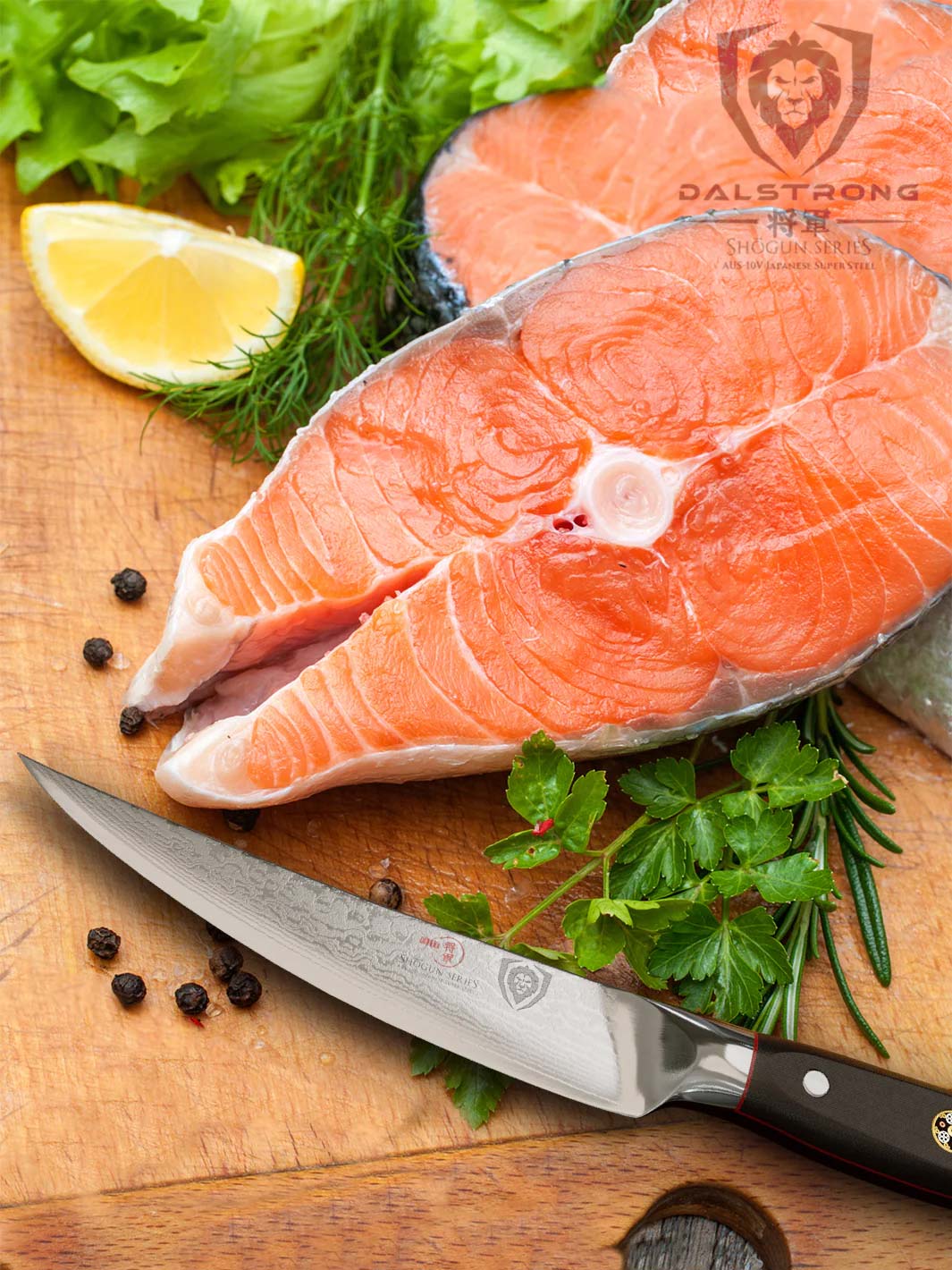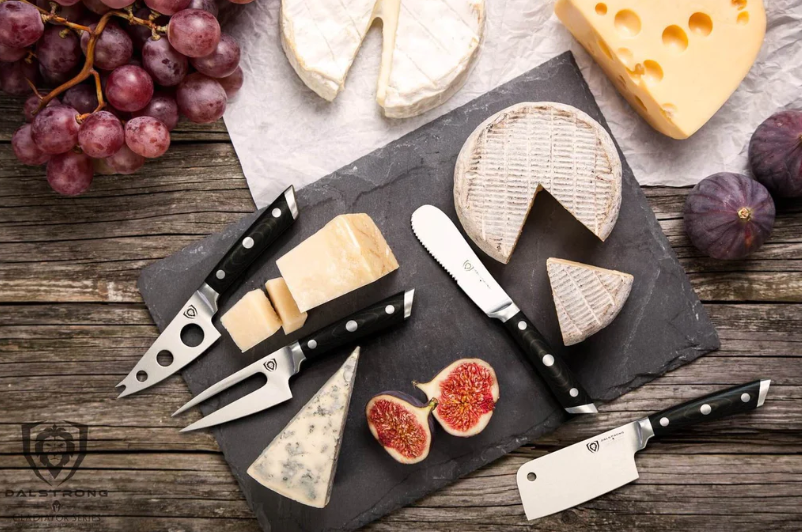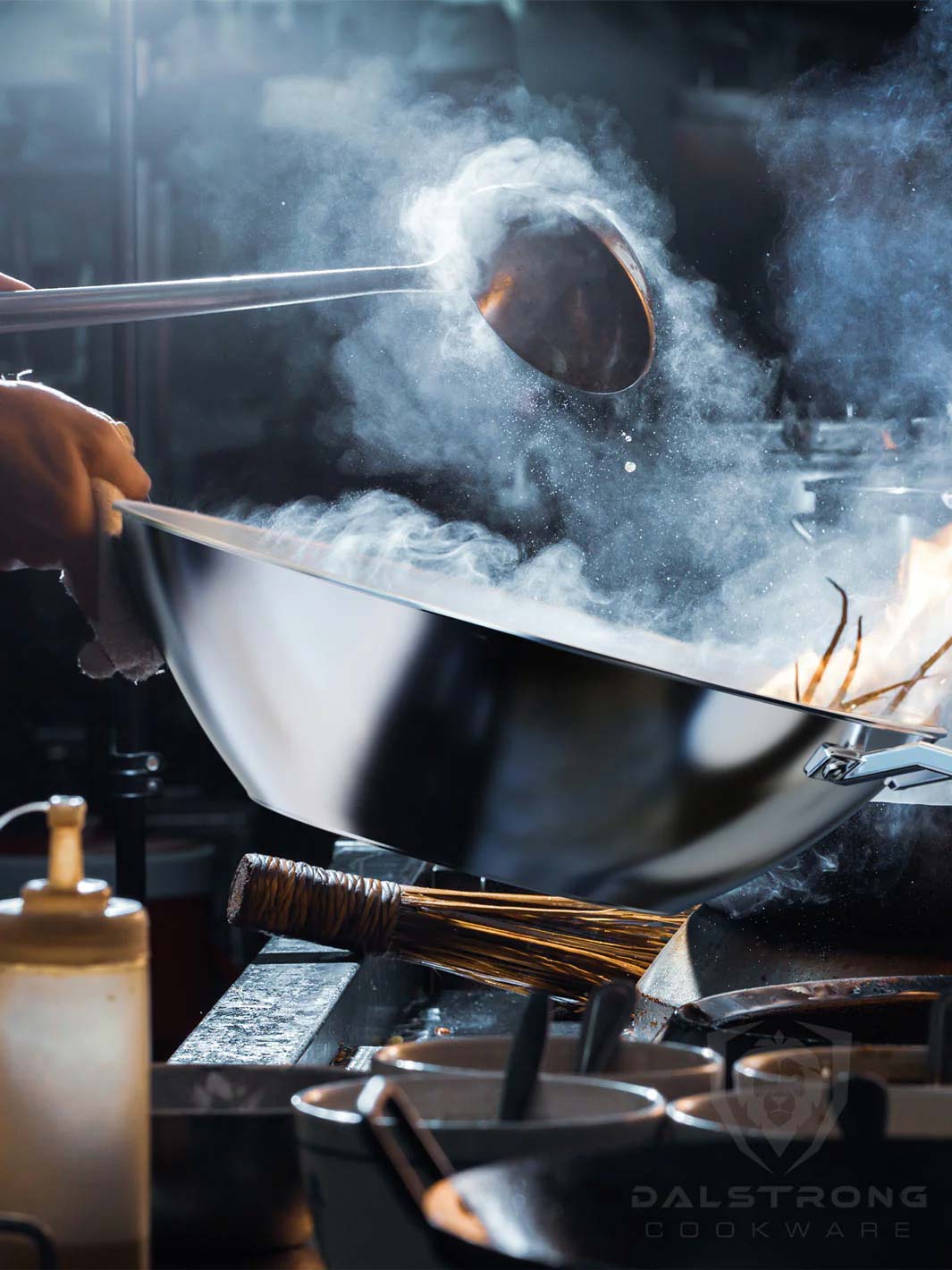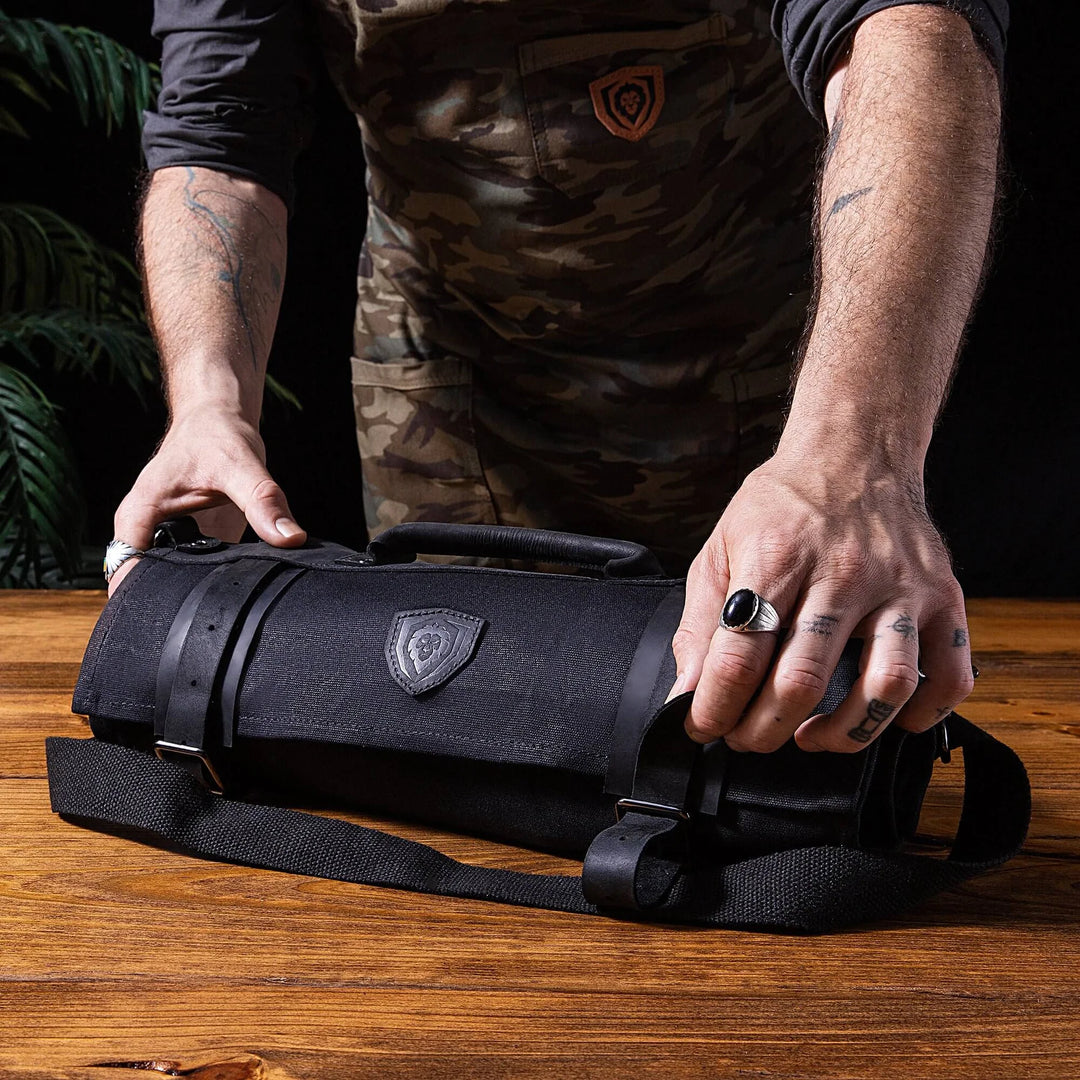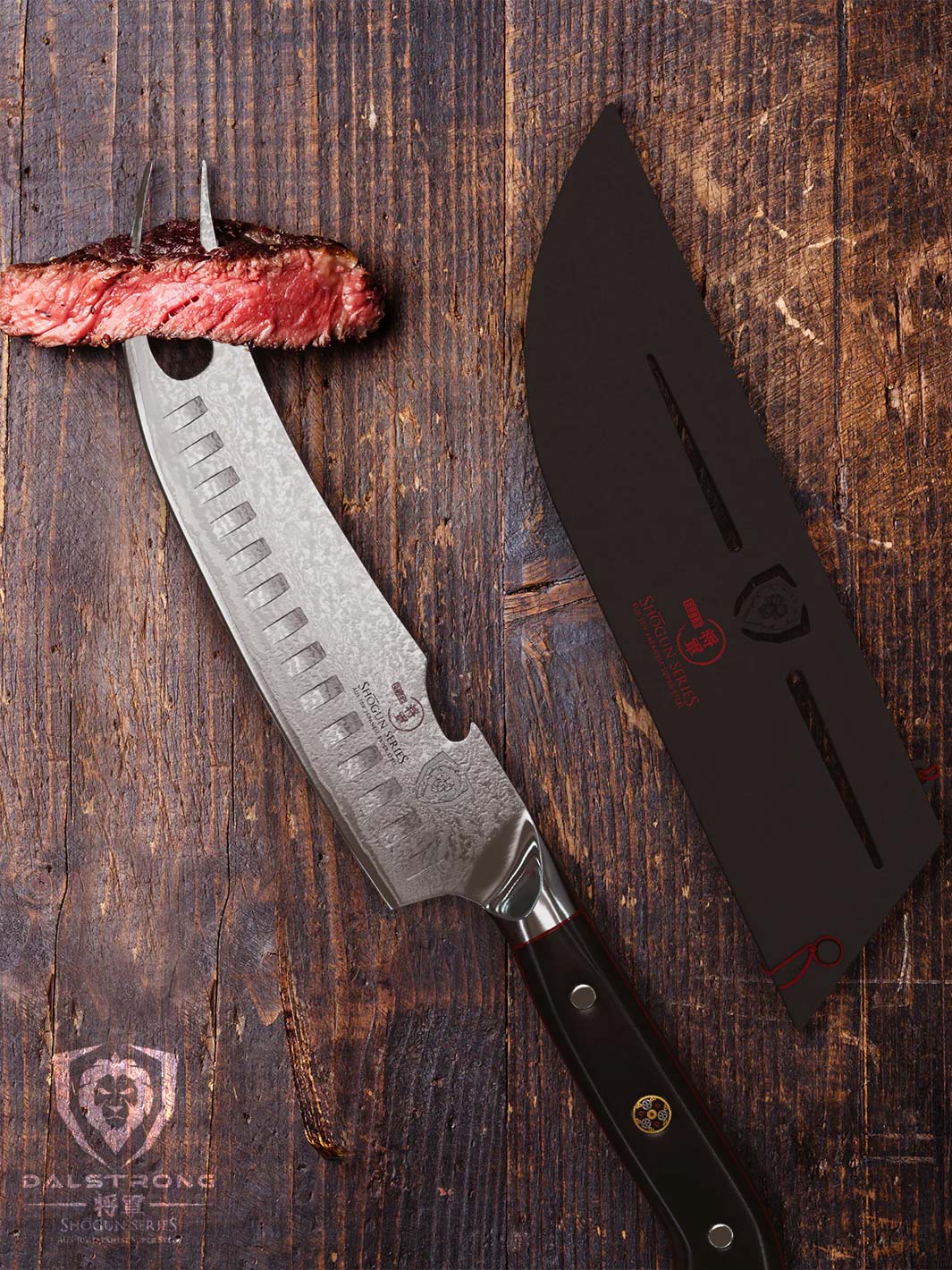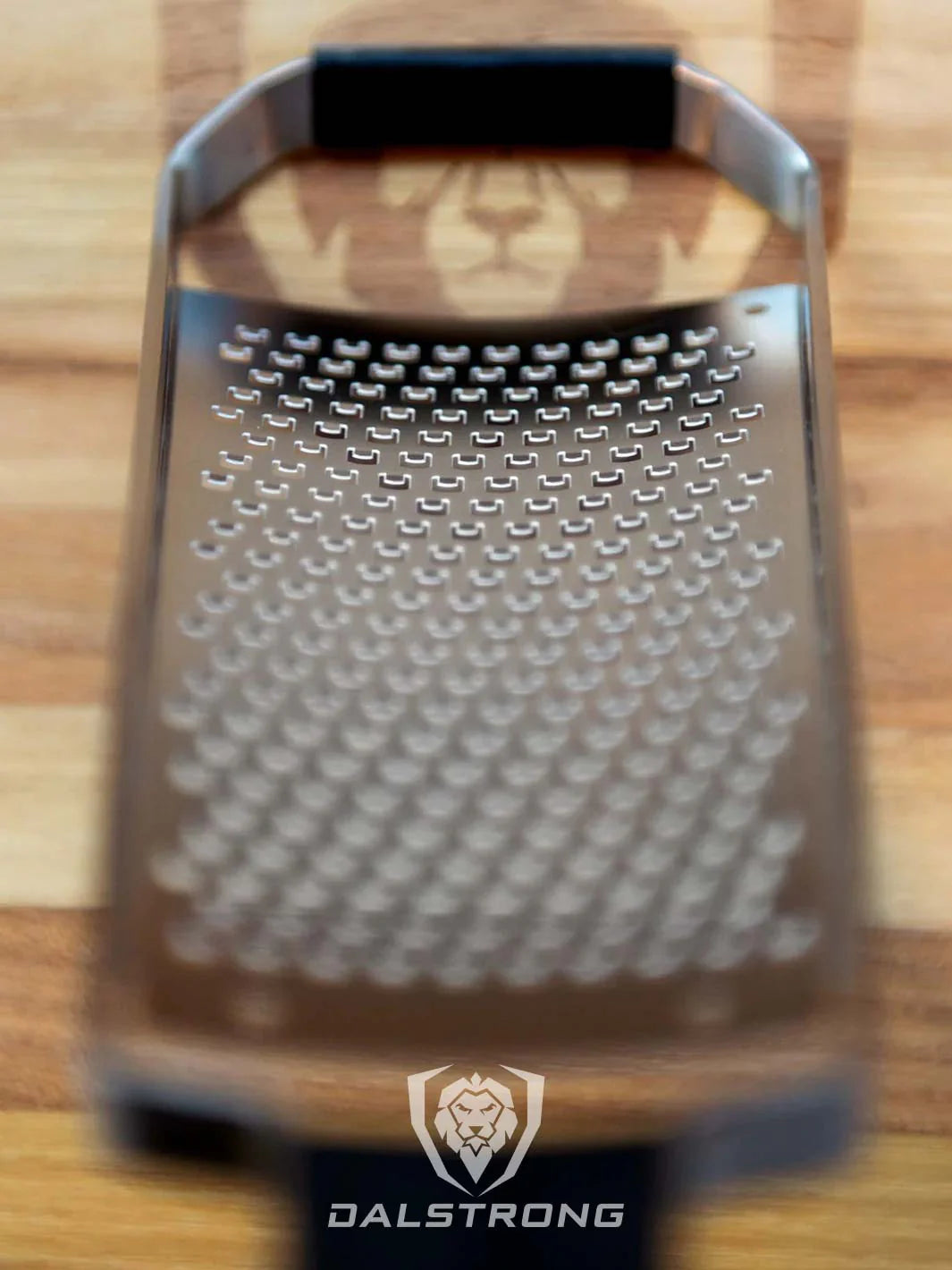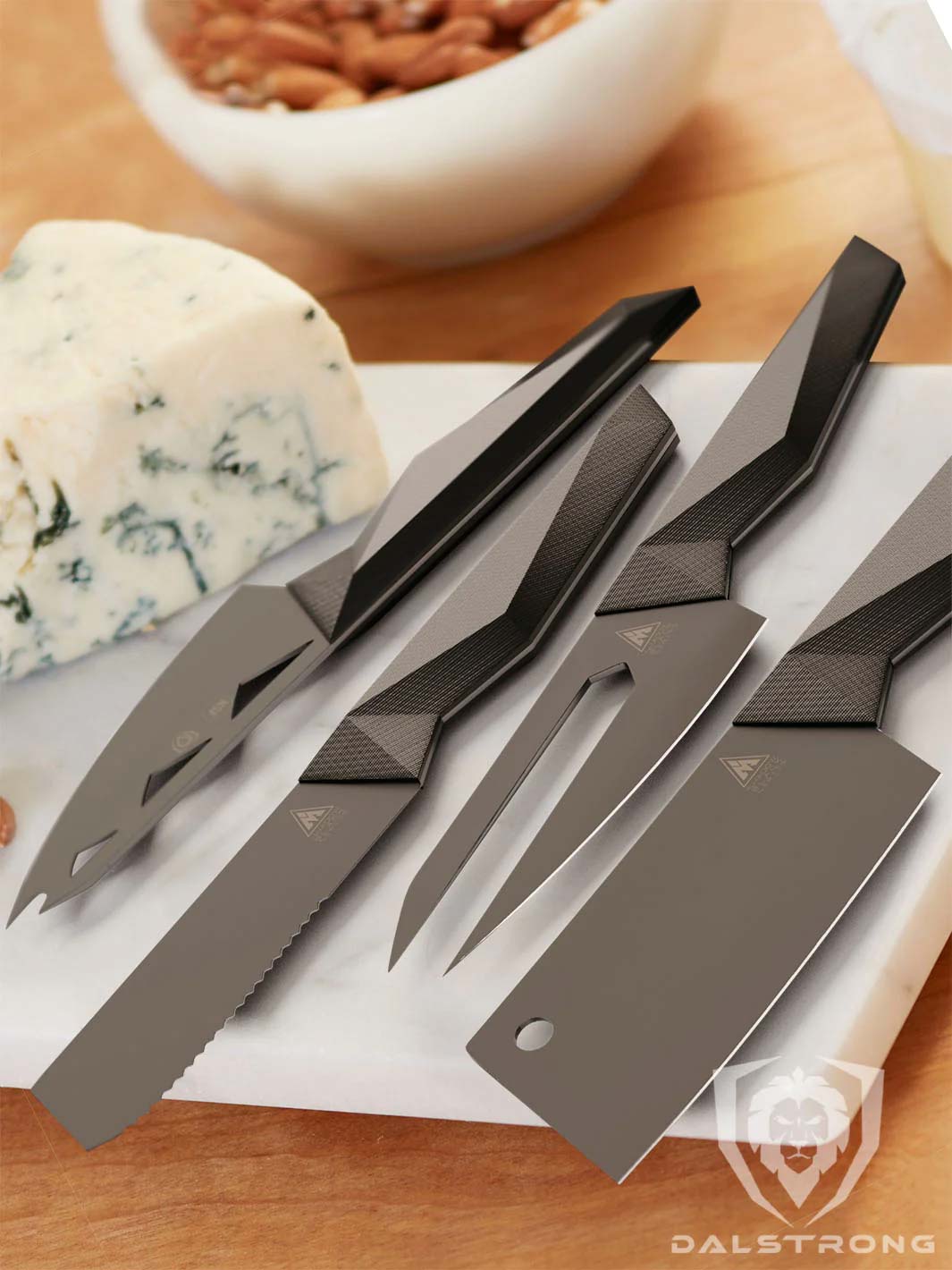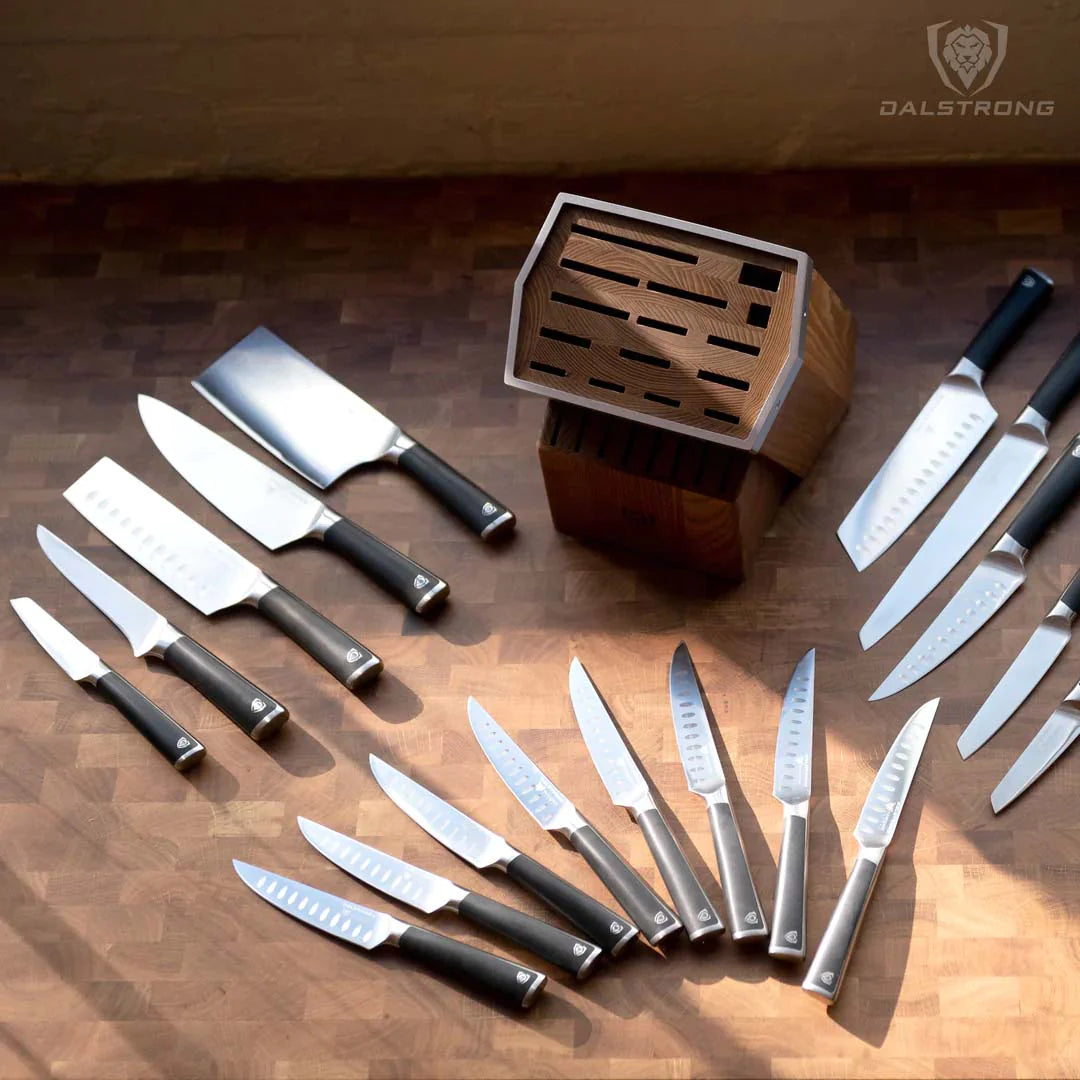Why Stainless Steel Skillets Are Better Than Enameled Cast Iron Skillets
 10" Frying Pan & SkilletHammered Finish Black | Avalon Series | Dalstrong
10" Frying Pan & SkilletHammered Finish Black | Avalon Series | Dalstrong
Stainless steel skillets are a better purchase than enameled cast iron skillets as they are more affordable, require little to no maintenance, and are built to last a lifetime. Stainless steel skillets are known for great distribution of heat, something enameled cast iron skillets don’t offer. Unlike regular cast iron skillets, stainless steel skillets don’t corrode while working with acidic foods.
The choices are vast – Porcelain enamel or a traditional cast iron skillet? Or, do you need the top-of-the-line – Stainless steel? Well, we’re here to walk you through everything you need to know, such as the heat retention of your skillet, its maintenance, and the cost, before making your purchase.
1. What Is A Cast Iron Skillet?
Oberon Series 10" Frying Pan & Skillet
A raw cast iron is a thick and dense piece of cookware that is made with 98% iron and 2% carbon for resistance and sturdiness. They work well on stovetops with high heat. What differentiates cast iron pans from seasoned cast irons and stainless steel pans is that they aren’t naturally nonstick and need seasoning before cooking. But, with the right care, they have the ability to last for decades on end.
However, in terms of seasoning, heat retention, heat conductivity, and durability, stainless steel cookware takes the cake. Meet us in the middle of this blog, and we’ll explain why that is true. But, before that, let’s understand…
2. What Is Enameled Cast Iron Skillet?

In simple words, they are seasoned cast irons. An enameled cast iron is becoming a common find in kitchens as they are not as heavy as regular cast irons, can support acidic food, and don’t require any seasoning. The enamel coating makes them lower in maintenance. These are traits that you would not find in regular cast iron cookware.
Enameled cast iron skillets are well-known for having a cooking surface that is fused with glass particles to form an enamel coating. While pans with an enamel coating aren’t as heavy as regular cast irons, they are still significantly heavier than stainless steel pans.
Recently, I compared both, the enameled cast iron pan, and the stainless steel pan – My conclusion was that the enameled cast iron pan took much longer to heat up because of its iron surface, and it scratched far too easily, as well. This is quite an inconvenience if you’re looking to whip up quick meals or meal prep for the week, having spent a fortune on the cookware.
3. Key Differences Between Dutch Ovens and Stainless Steel Stockpots
Oberon Series 9" Frying Pan & Skillet
Enameled cast iron skillets are gaining popularity, thanks to the variety in cookware types, colors, and patterns. They are also much easier to maintain compared to regular cast iron cookware.
However, stainless steel stockpots and skillets are much more durable and easier to maintain than enameled and regular cast iron cookware. While enameled cast iron skillets remain a workhorse in their own right for a variety of reasons, it lacks a few attributes that stainless steel cookware offers.
Let’s dive into this in more detail.
|
Attributes |
Dutch Oven |
Stainless Steel Stockpots |
|
High In Maintenance |
An enameled cast iron Dutch Oven like a Le Creuset, better known as a Dutch Oven, can be easily chipped and can crack with the slightest of bumps while cleaning or cooking. |
Easy to maintain and can be stacked atop other stockpots – Something Dutch Ovens can’t support. |
|
Extremely Hot |
When you place your Dutch Oven in the oven, it can create an excessively hot atmosphere in your kitchen, making it suffocating, and sometimes, even unbearable. |
Heats significantly faster than Dutch Ovens. |
|
Expensive Price Point |
When compared to Dalstrong’s stockpots, a Le Creuset or other Dutch Ovens are quite pricey. While most stockpots cost anywhere between an affordable $50-$170, an enameled cast iron Dutch Oven can cost anywhere between $50-$1000. |
Less expensive than Dutch Ovens or a traditional Le Creuset regardless of the size of the stockpot. |
|
Not Tech-Savvy |
Today, most individuals prefer cookware that is set-it-to-forget-it. This is not something a Le Creuset or a Dutch Oven can offer. You can leave your Dutch Oven on high heat to boil or simmer food, but it does not have a self-start option like a slow cooker. |
While enameled cast iron dutch ovens are used to tenderize food, stainless steel slow cookers can tenderize and cook food evenly. Nonstick cookware like Dutch Ovens can overheat but would not guarantee food from being cooked evenly. You would require a food thermometer. |
|
Time-Consuming |
An Enameled cast iron pot takes a longer time to heat than stainless steel stockpots, so unless you’re looking for a one-time pot roast, a Le Creuset or Dutch Oven may add to your cooking time. |
Requires little to no seasoning and heats incredibly fast. Stainless steel stockpots cool down efficiently, decreasing your time in the kitchen. |
4. Key Differences Between Enameled Cast Iron Cookware vs. Regular Cast Iron Cookware
Oberon Series 10" Frying Pan & Skillet
Before we dive into the nitty-gritty of why a stainless steel pan is a much better purchase than an enameled pan, let’s talk about the key differences between enameled cast iron cookware and regular cast iron cookware that you find in most kitchens. Let’s focus on the most popular piece of iron cookware that there is – Pans and skillets.
|
Attributes |
Enameled Cast Iron Cookware |
Regular Cast Iron Cookware |
|
Construction |
Cast iron cookware that is coated in enamel glaze for a nonstick finish. |
Bare cast iron cookware that is made with 98% iron and 2% carbon. |
|
Cookware Types |
Porcelain enamel pots and pans, skillets, and dutch ovens such as a Le Creuset that is passed down from generations. But enameled cast iron grill pans are not safe in ovens. |
Pans and skillets. |
|
Appearance |
Known for glossy patterns and colors. |
Jet black or dark gray. |
|
Durability |
Requires high maintenance for stronger durability, and chip or crack easily which makes them unsafe for ovens and dishwashers. |
Requires high maintenance for stronger durability. |
|
Cooking Performance |
Can handle ingredients except for fish, cheese, eggs, or garlic. |
Cannot support acidic food or acidic ingredients. |
|
Iron Supplement |
No |
Yes |
|
Maintenance |
Requires high maintenance but no seasoning. |
Requires high maintenance and seasoning from time to time. |
|
Cleaning |
Needs warm and soapy water. |
No soapy water as it damages the cooking surface and needs to be wiped completely dry after washing. |
|
Price |
Generally affordable, but sometimes expensive due to patterns, colors, and nonstick coating. |
Generally expensive. |
5. Key Differences Between Enameled Cast Iron Cookware and Stainless Steel Cookware
 12" ETERNA Non-Stick Frying Pan & Skillet - The Oberon Series
12" ETERNA Non-Stick Frying Pan & Skillet - The Oberon Series
While enameled cast iron cookware is known for its pattern and colors, stainless steel cookware offers a more varied range of sizes for frying pans, skillets, or stockpots. Here’s a more detailed guide to help you understand the charm of all things stainless steel.
|
Attributes |
Enameled Cast Iron |
Stainless Steel |
|
Purpose |
Caters only to soups, broths, braised foods, and other slow cooked foods. |
Caters to nearly all foods, and it only depends on the size of your stockpot. |
|
Construction |
Enameled, Porcelain, or Bare Cast Iron (such as a traditional Lodge or Great Jones cast iron in your kitchen). |
Fully-clad stainless steel to prevent any chemicals from leaching into your food. |
|
Heat Conductivity |
Takes a lot of time to heat up due to its enamel glaze. |
Heats faster than enameled cast iron cookware. |
|
Heat Retention |
Good heat retention. |
Cools down in quick to transfer food from cookware to storage containers. |
|
Versatility |
Compatible with stovetops for sauces and broths. |
A stainless steel skillet or a fry pan is perfect for stovetops as it helps in boiling, steaming, and simmering food. |
|
Oven Compatibility |
Yes |
Yes, and stainless steel skillets and frying pans can endure high temperatures of 500º-600º F. |
|
Weight |
Above 12 pounds or 5.5 Kg |
5 pounds or 2.2 Kg |
|
Storage |
Can’t be stacked atop other cast iron cookware as it is prone to chipping or cracking. Takes up a large amount of space for storage. |
Extremely convenient to store stainless steel cookware as they can be stacked atop each other without any cracks or chips occurring. |
|
Price |
Expensive. |
Significantly less expensive than enameled cast iron cookware and can be purchased at affordable prices. |
Additionally, stainless steel cookware has riveted handles on either side of it that do not overheat, unlike a Le Creuset or a Dutch Oven. Modern day stainless steel cookware such as frying pans and skillets cool down quicker than Le Creusets or even the best Dutch Oven you may own. You can simply wear a pair of oven mitts to remove your pan. In simple words, stainless steel cookware takes less elbow grease to maintain.
6. Why Stainless Steel Is Safer Than Enameled Cast Iron
 12'' Frying Pan & Skillet | The Oberon Series | Dalstrong ©
12'' Frying Pan & Skillet | The Oberon Series | Dalstrong ©
Stainless Steel
The cookware you utilize plays a significant role in your health. The reason why stainless steel is much safer than enameled cast iron is because they’re available in vast variety of options such as 18/20, 18/4, or 18/8.With plenty many options out there, the chromium and nickel content of the frying pan or skillet does not affect the taste, smell, or the appearance of your food in any shape or form.
Secondly, stainless steel is built to last a lifetime. The best trait of stainless steel cookware is that it does not require seasoning. This is considered a good sign, since you don’t have to worry about stuck-on food particles, or toxic chemicals leaching into your food. This is precisely why 18/10, 18/4, and 18/8 are the most commonly sold pieces of stainless steel cookware.
Enamel Cast Iron
While enameled cast iron cookware such as an Uno Casa or a Le Creuset is completely safe, iron cookware that has been passed down from one generation to another, may be outdated with the regulations around Teflon and other harmful chemicals and toxins that are present in enameled iron cookware.
When Teflon is heated up in an environment that is more than 500º-600º F, it will begin to leak lead and other toxins into your food – This is purely hazardous for all those present in the kitchen. It is ideal to opt for a stainless steel fry pan or skillet to prevent iron from transferring from your cast iron to your plate. It is always better to be safe.
Additionally, if the inside of your Dutch Oven or enameled cast iron cookware cracks and chips, it will leach ceramic into your food as well. It is also wise to check the existent enameled cookware in your kitchen, as they could contain Cadmium or Lead.
To prevent this from happening, you would have to season the uncoated cast iron pan or the enameled cast iron pan with grease like oil or butter, which takes away the idea of owning a piece of cookware that does not require seasoning. It would be much more practical to purchase a stainless steel skillet that offers these perks.
7. Dalstrong’s Best Stainless Steel Cookware
Dalstrong is known for having the most versatile and varied range of premium stainless steel pieces of cookware. We’re here to talk about some of our best-sellers and how they can enhance your time in the kitchen. Let’s get cracking.
1. 10" Frying Pan & Skillet ETERNA Non-Stick | Oberon Series
If you’re looking for a stainless steel fry pan that is ideal to store leftovers or large batches of food in, this hybrid work and fry pan is calling your name. The 10” inch cooking surface has a 3-Ply aluminum core and a nonstick coating that is perfect for a a couple or a small family.
Grab this in addition to Dalstrong’s 12-piece stainless steel cookware set and set yourself up for success in the kitchen.
Pros:
- This nonstick fry pan and skillet hybrid has excellent heat retention and conductivity.
- The glass lid helps prevent spills and also acts as a pressure release, saving your cookware from warping.
Cons:
- This frying pan and skillet hybrid could be intimidating if you’re just stepping into the culinary world.
- If you live by yourself, you may not need a wok as big as this one.
2. 12-Piece Cookware Set Silver | Avalon Series
The 5-Ply Copper Forged Foundation on this 12-piece cookware set from the Avalon series is designed to set you up for a lifetime’s worth of goodness. Perfect for cooking and searing steaks, as well as sauteing and cooking up patties or cutlets.
Pros:
- It is built to last a lifetime, so I would say it is worth the price.
- It is designed to fit into your kitchen arsenal.
Cons:
- It may be out of budget for some folks.
- If you live by yourself, this set could take up space in your kitchen.
3. 12 Piece Cookware Set Oberon Series
Screaming versatility, this 3-Ply Copper aluminum cladded 12-piece cookware set from the Oberon series is a true life saver. Functional and striking at the same time, this set of stainless steel cookware is all you ever needed. The best part? It is made with thick layers of 18/10 stainless steel for nonreactive and safe cooking.
Pros:
- It has tremendous heat retention and conductivity.
- The vented hole on the glass lid prevents spillage while acting as a pressure release.
- Easy to transition from stovetops to the oven for a perfect finish.
Cons:
- This set could be intimidating if you’re a novice. But, with our chef blogs there to help you out, it doesn’t take much time to become a Dalstrong Pro.
- It could be overpriced for some folks.
4. 10" Frying Pan & Skillet Hammered Finish Black | Avalon Series
Coming in strong is yet another hybrid of 18/10 stainless steel and a 5-Ply copper forged foundation. Function meets form with this skillet from the Avalon series. Perfect to sear, brown or boil food. Ideal for cooking quick meals and thick proteins.
Pros:
- Excellent conductivity and it heats up 5x faster and better than Iron.
- Thick layers of smudge-free aluminum for maximal heat retention.
- Vented hole to prevent spills and warping of your cookware that also acts like a pressure release.
Cons:
- If you’re one for individual pieces of cookware, I suggest the 10” inch skillet frying and pan.
- There is a higher price tag for this hybrid.
5. 10" Frying Pan Hammered Finish Silver | Avalon Series
Used by most home cooks and professional chefs, this copper-forged frying pan is extremely durable and is lined with an additional smudge-free layer of aluminum to stop any possible leaching of chemicals into your food.
Pros:
- This frying pan has exceptional responsiveness to temperature changes and does not overheat.
- Allows easy transitioning from stovetop to oven or oven to cutting board with a simple pair of oven mitts.
Cons:
- If you prefer a frying pan that is made purely with aluminum or copper, this 10” inch pan may not be the right fit for you.
- Could be out of budget for some folks.
8. Frequently Asked Questions
Which is better cast iron or enameled cast iron?
Enameled cast iron is a better choice out of the two as it has a nonstick coating to help you out. However, stainless steel skillets and pans take the cake as they’re ideal in terms of construction, cost, durability, and heat retention.
Is cooking in enameled cast iron safe?
Modern day enameled cast irons are safe, but those passed down from generation to generation may contain harmful toxins such as Teflon, Cadmium, and Lead. So, it is better to go with a safer alternative such as a stainless steel pan or skillet.
What can you not cook in enameled cast iron?
You can cook most foods in an enameled cast iron, but cooking foods like fish, garlic, cheese, and eggs tend to leave behind smells that can be hard to get rid of.
Is enameled cast iron worth it?
If you’re comparing an enameled cast iron with a regular cast iron, it is the better option. However, there are downfalls to cast irons in general, which is why most individuals opt for stainless steel skillets or pans as they are built to last a lifetime, have great heat distribution, and are low in maintenance.








































































































































































































